Archives: expositions
les expositions
Bruno Botella – Fromage de nuit
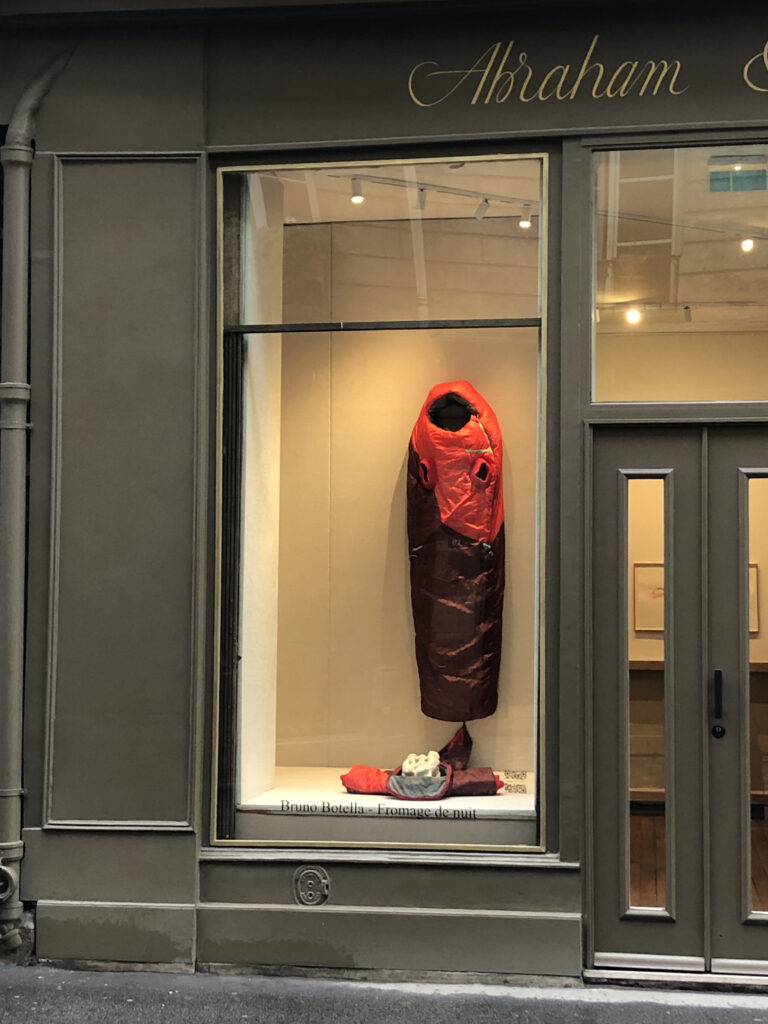
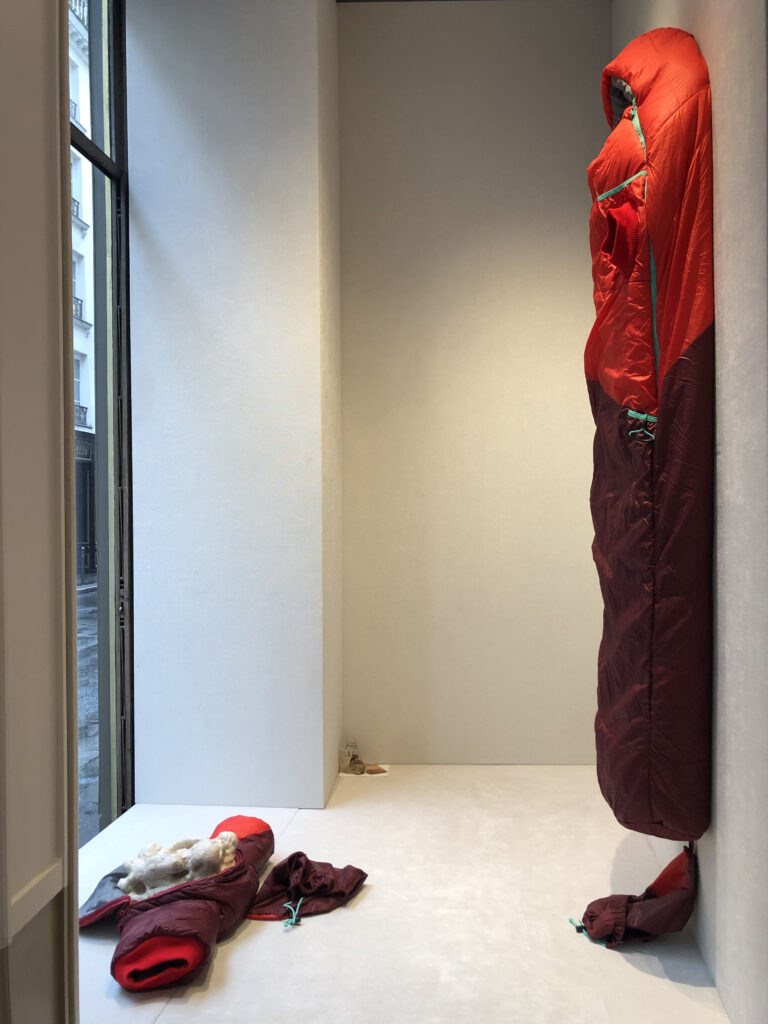
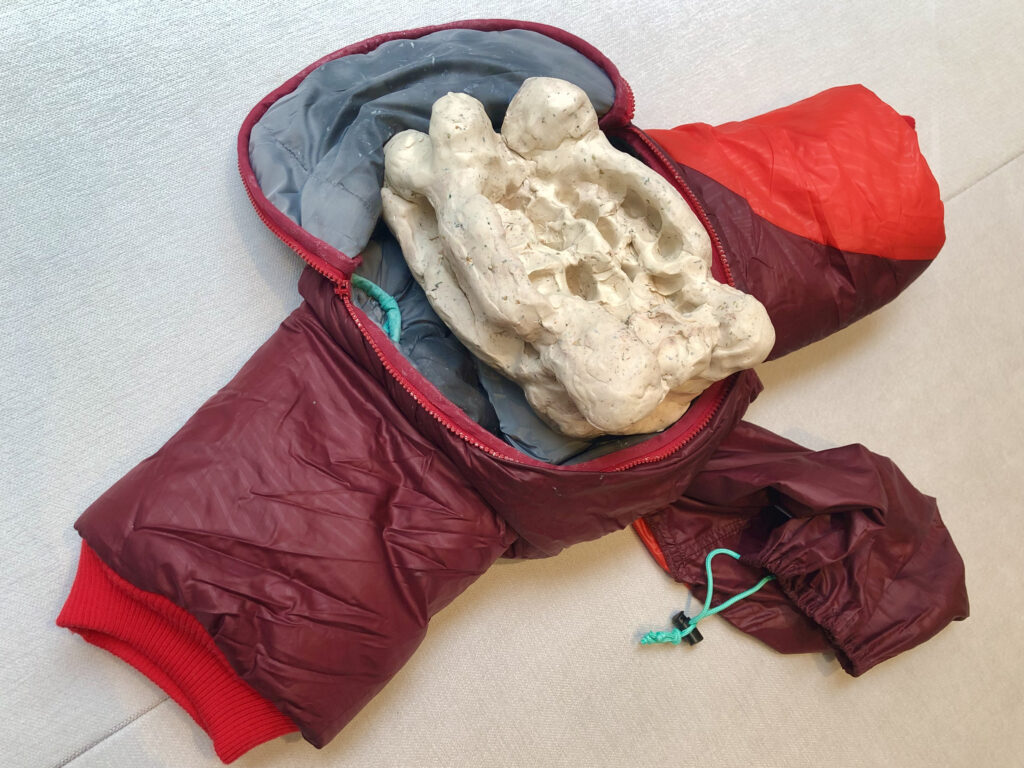
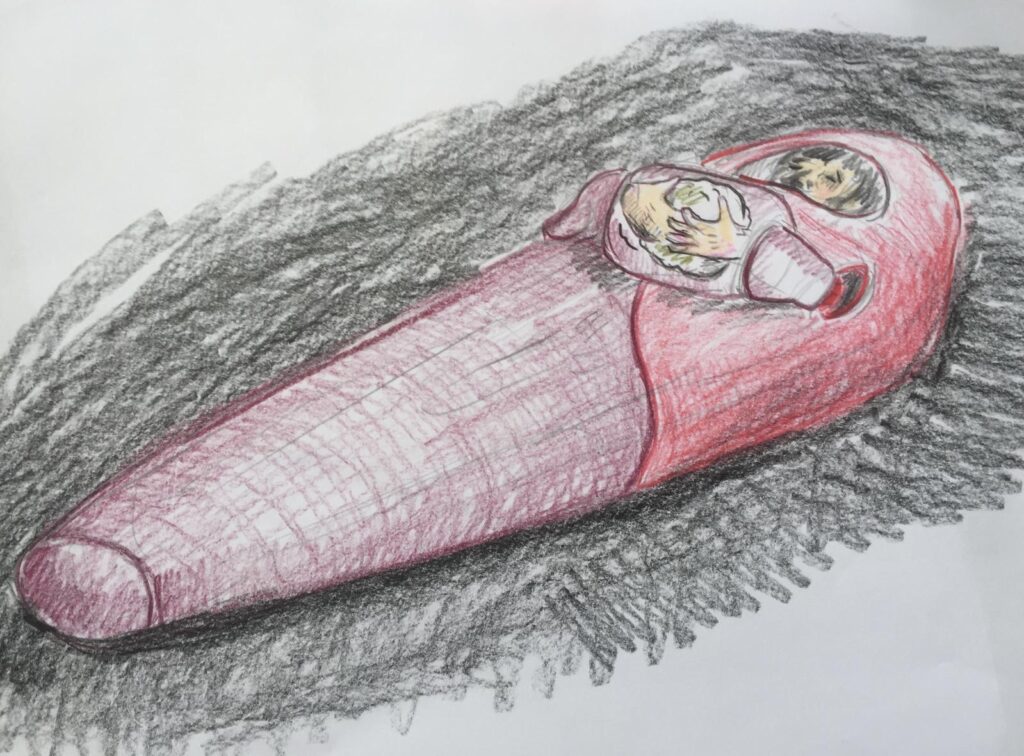
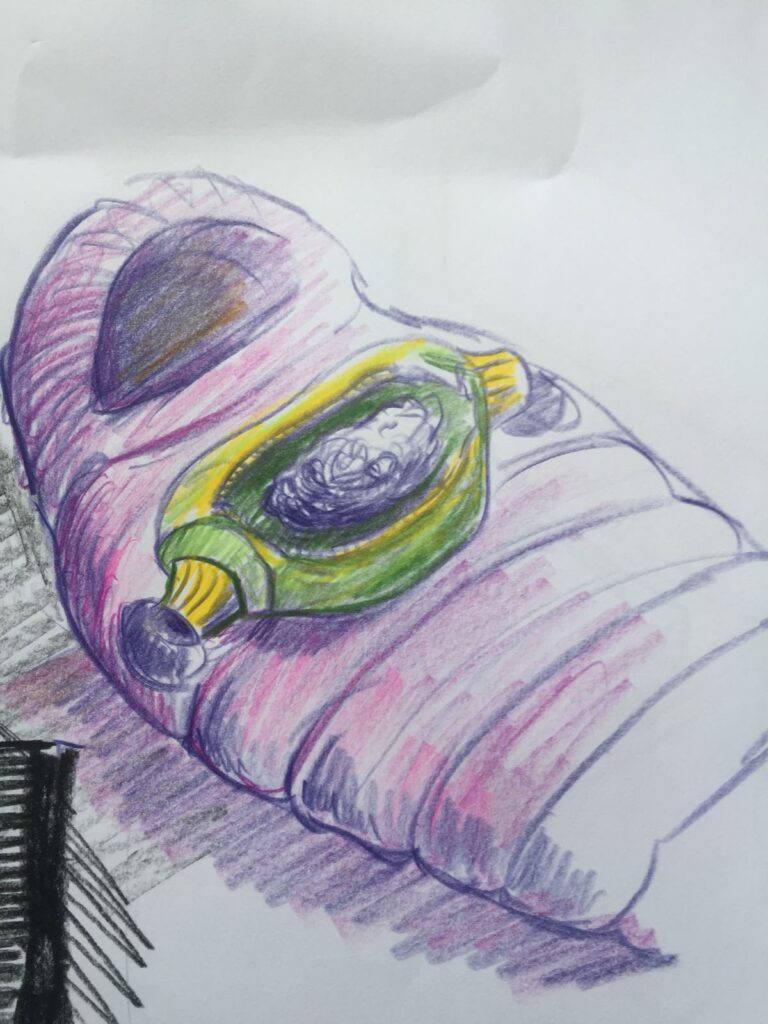
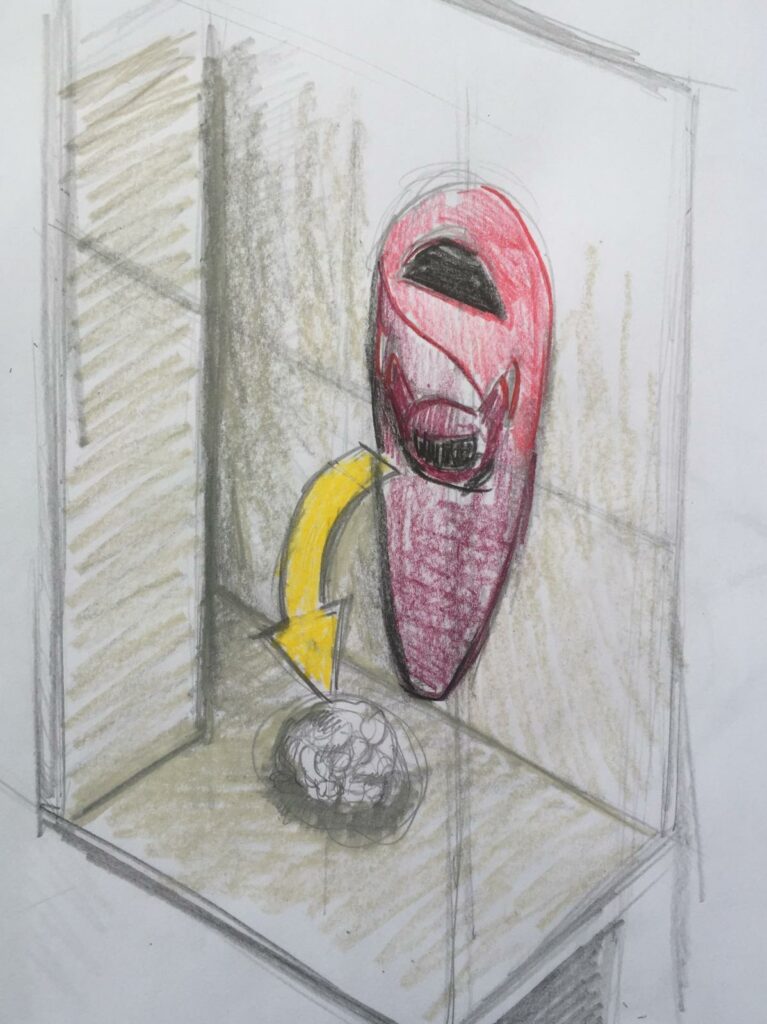
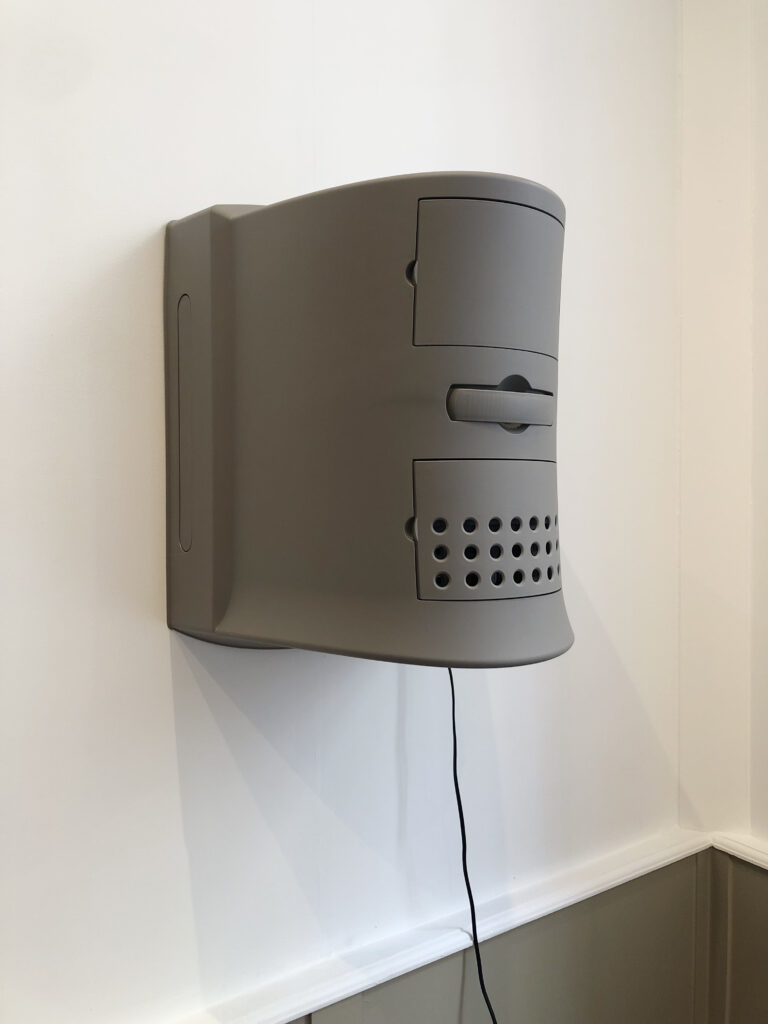
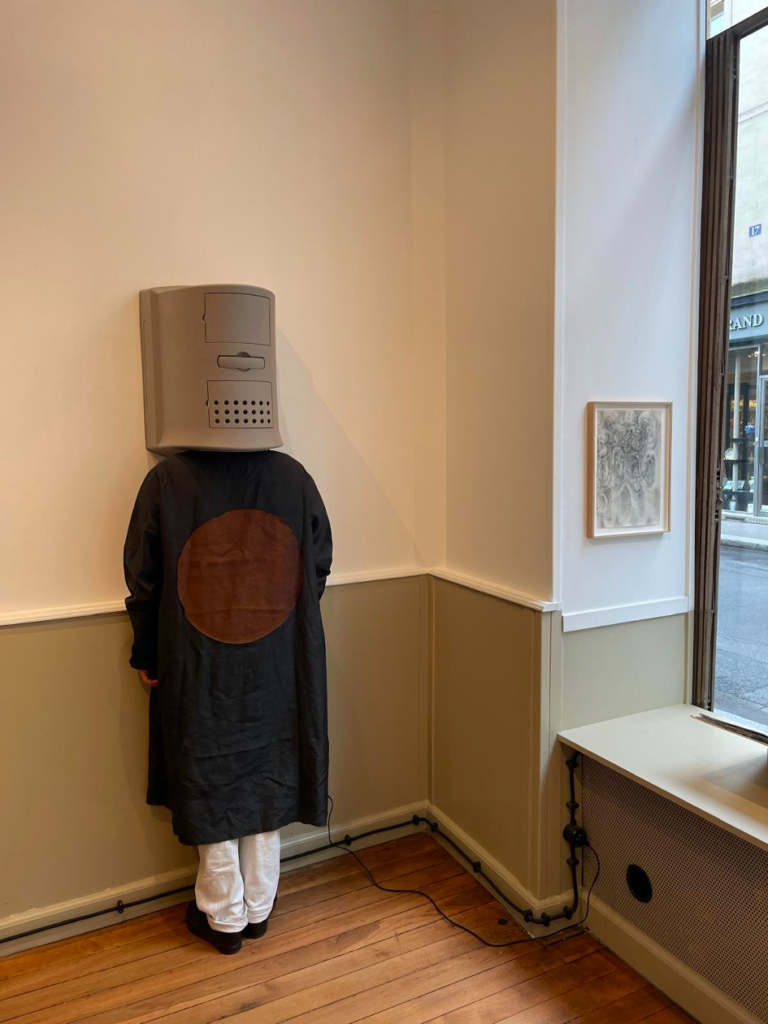
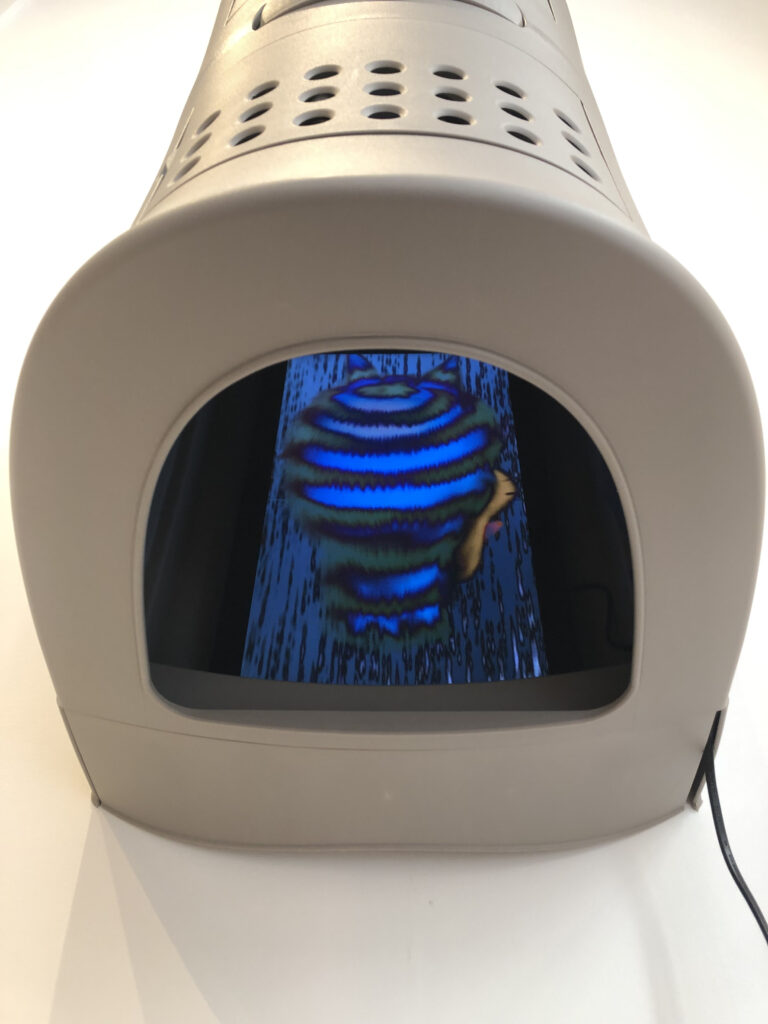
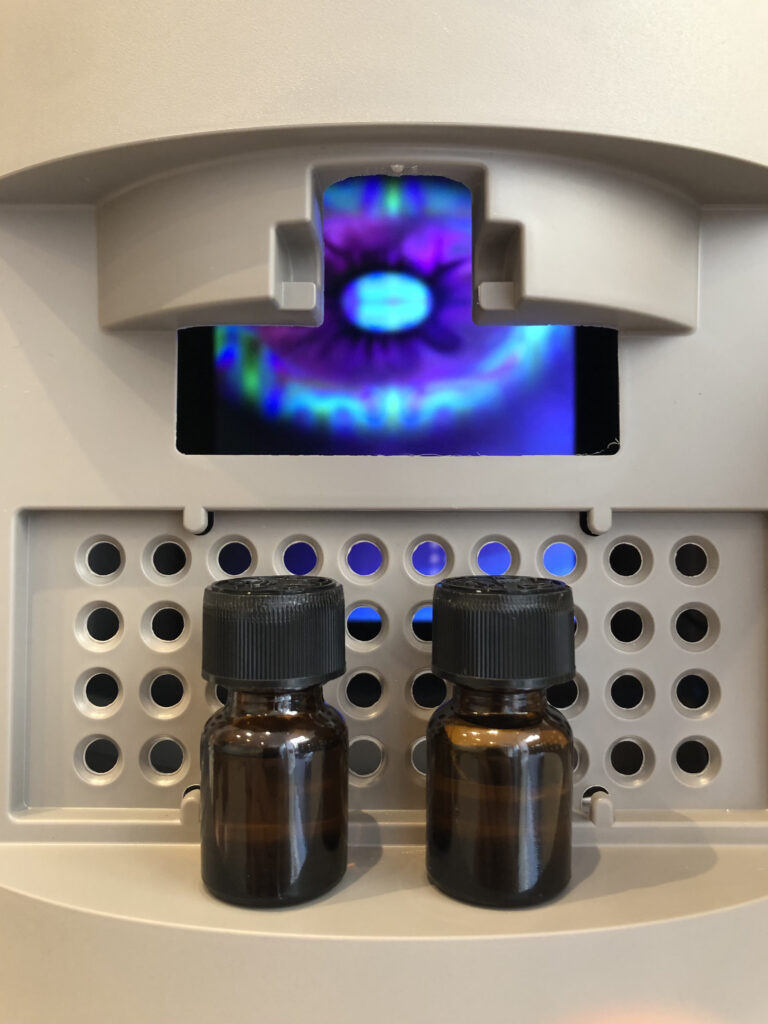
Bruno Botella pursues an experimental body of work in which sculpture and drawing play a central role. He develops performative devices that allow him to disengage from himself while capturing the imprint of his psychic activity in a sculpted object. Boxes for sculpting blind, a bed with a hole in the mattress giving access to a box filled with clay hidden under the bed base, sculpture shaped in an aquarium filled with leeches, the use of anaesthetic clay or hallucinogenic modelling clay of his own invention, are just some examples of the devices and materials that Botella uses to free himself from his perceptions, sensations and even his conscience, in order to give form, as he puts it, to ‘figures without kinship or species’.
For this exhibition, he has imagined a new device, Incubat, that enables him to sculpt while he’s sleeping a modelling paste mixed with medicinal herbs reputed to stimulate dream activity. The public will also be able to activate a Heaume, a sculpture inside which the user can insert his or her head to inhale amyl nitrite vapour (poppers) while watching a cartoon specially designed by the artist.
Mirroring these plastic and sensory experiments, the artist uses a calligraphy brush to produce drawings of great graphic freedom, through which he develops a strange and unexpected hallucinatory universe. Several of his most recent sketchbooks will be on show.
Francisco Tropa – Panta Rhei




Entitled Panta Rhei (in reference to Heraclitus’ famous formula meaning “everything flows”, in the sense of “everything passes”), these silkscreens belong to a series of works by Francisco Tropa based on the themes of mimesis and play. They are composed of silk-screened geometric motifs, with cardboard cut-outs representing stones arranged inside them. These stone images can be freely rearranged by simply opening the frame, thus forming new compositions. They evoke other works by the artist in the form of transparent boxes containing natural pebbles and their bronze replicas. The pebbles and bronze casts can be freely extracted and arranged to create arrangements reminiscent of landscapes. A participatory device that unfolds here in graphic works.
Miriam Cahn, Eugène Carrière – schreiender säugling
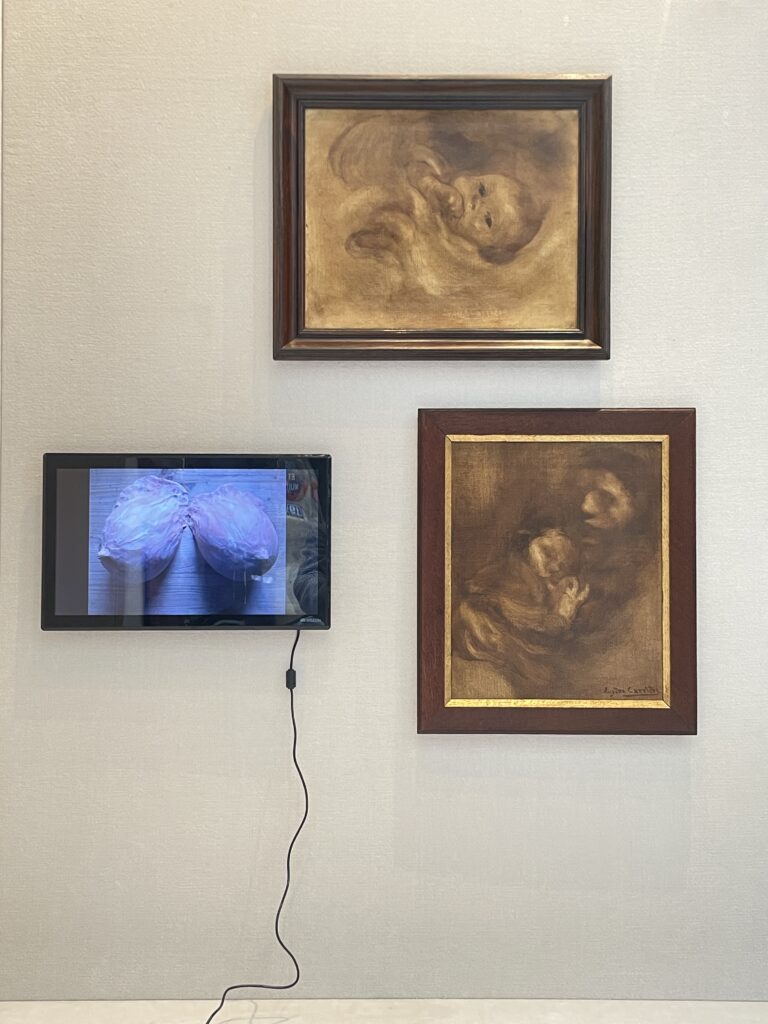
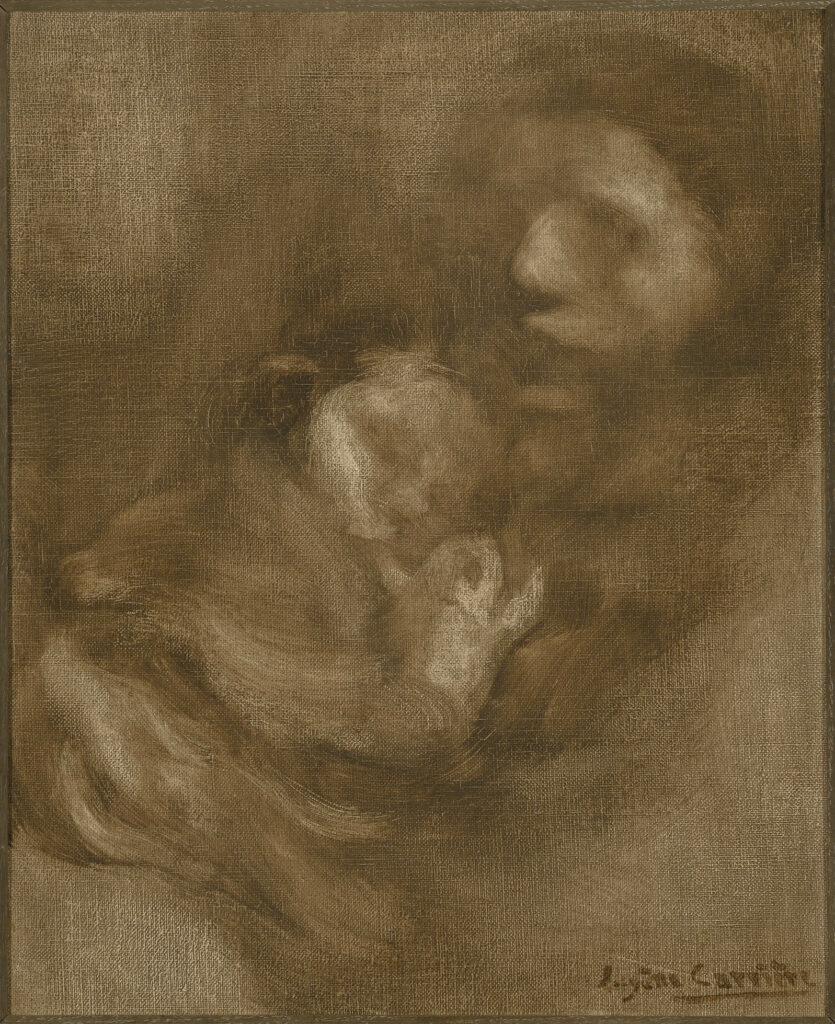
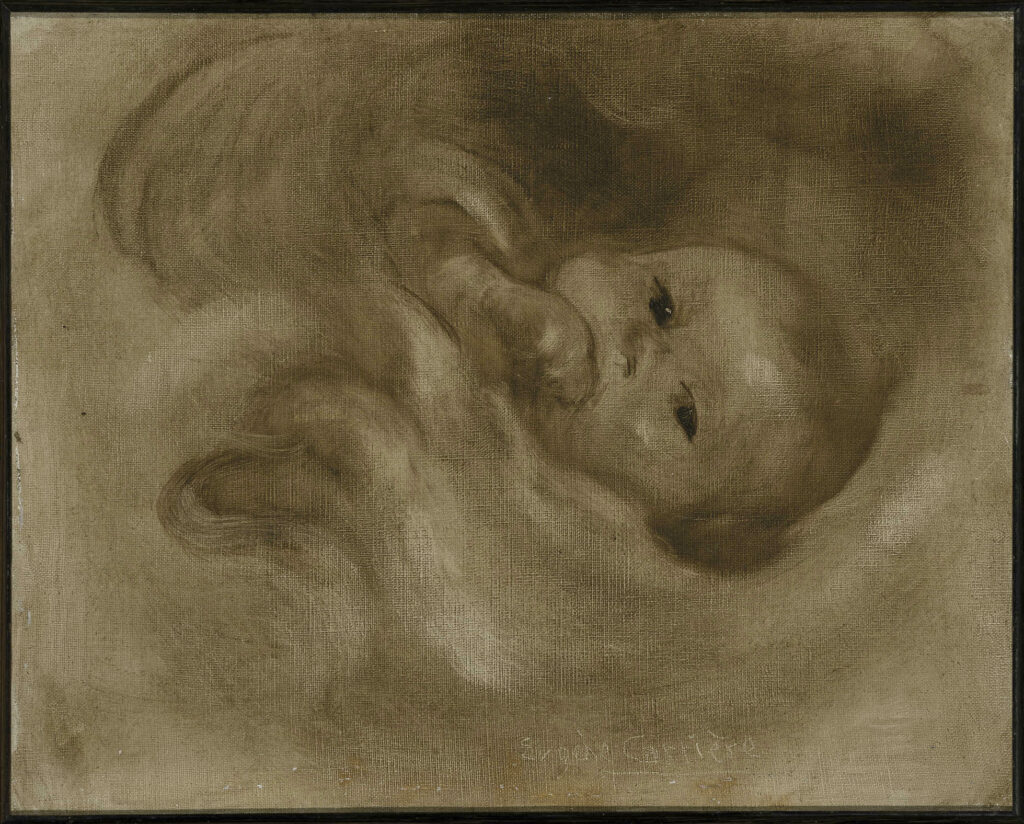
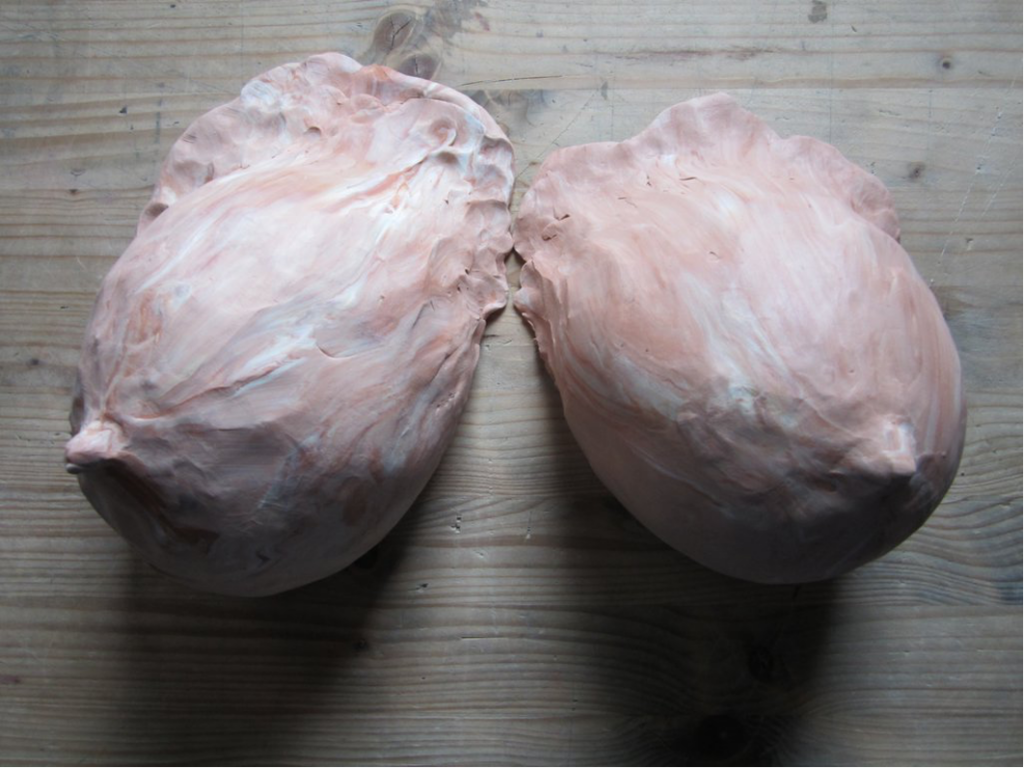
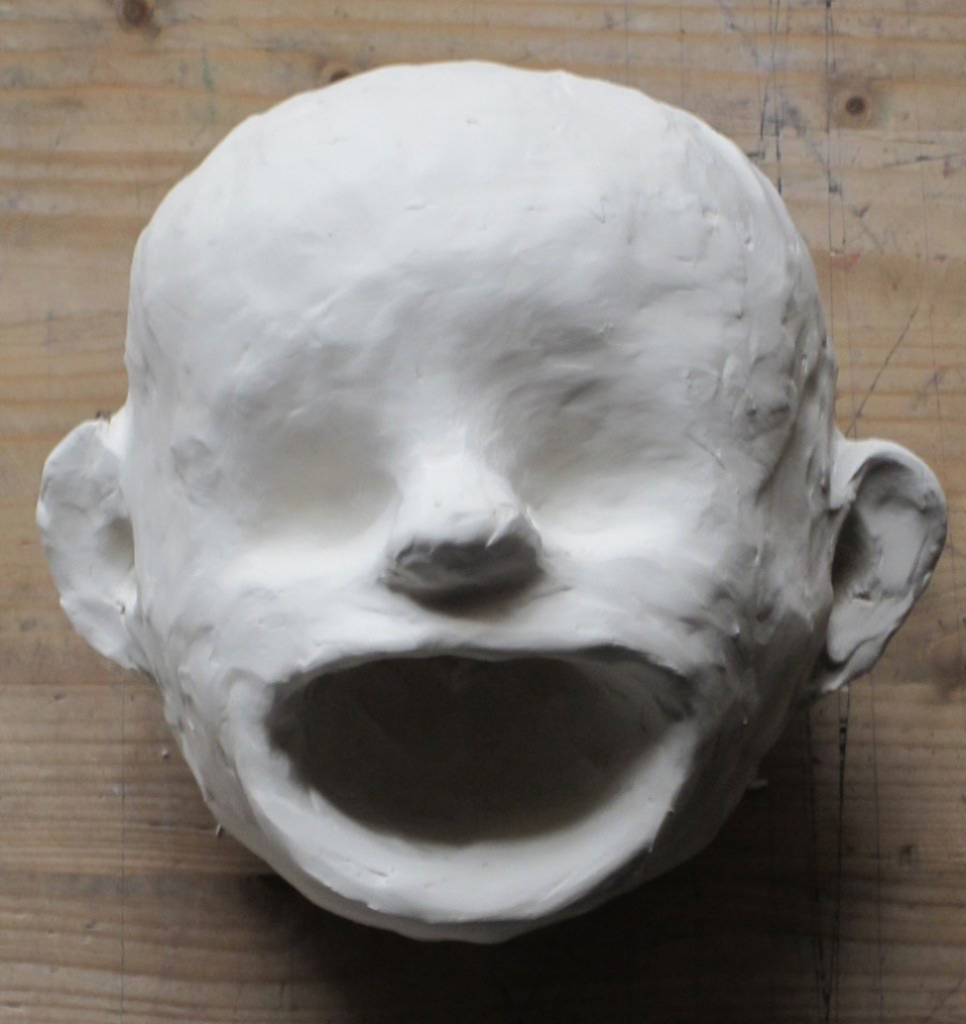
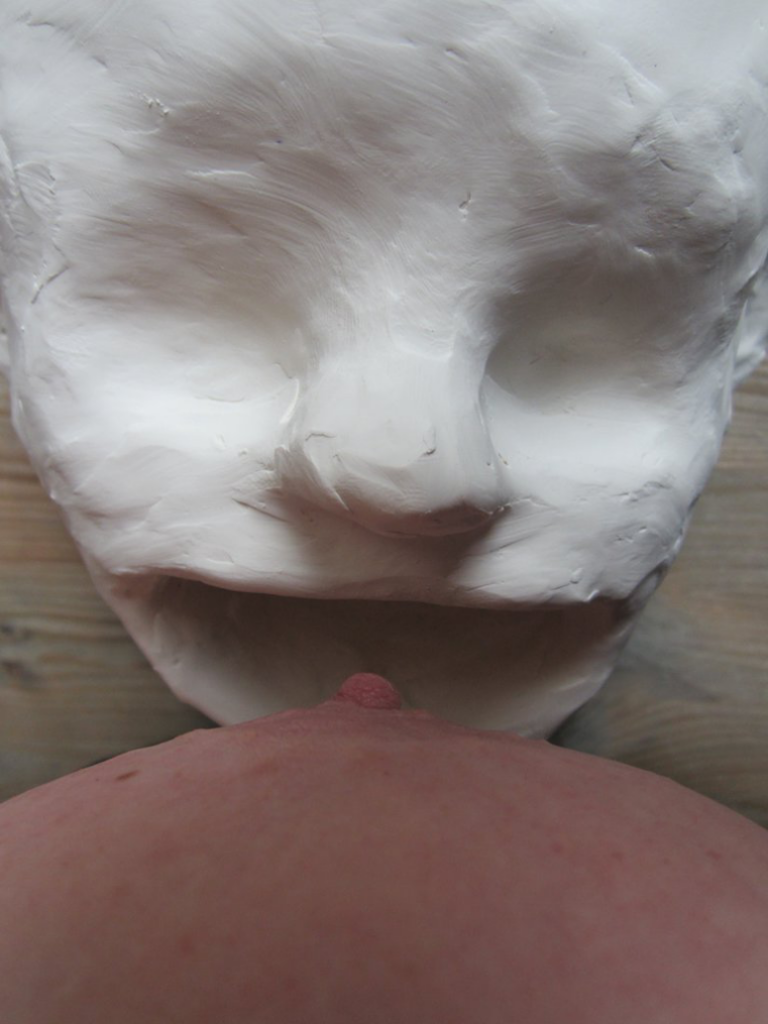
Eugène Carrière (1849 – 1906) was one of the most singular painters of the late 19th century. Unlike the artists and movements of his time, he explored a tight register, both in his means of expression and in his choice of subjects. Using a palette limited to shades of brown, he painted sketchy compositions in which the figures are only shaped by chiaroscuro. The forms emerge from a background devoid of scenery or detail, far from any description or narrative. He painted a few landscapes, still lifes, numerous portraits and, above his own family. A painter of intimacy, Carrière tirelessly captured his wife and children in genre scenes of which he gave multiple variations.
Alongside the paintings by Eugène Carrière, a digital slideshow by Miriam Cahn gives the exhibition its title: schreiender säugling [crying child]. Composed of images edited together to compose a film, the slideshow shows sculptures in various states. A child’s head, mouth gaping. Breasts. These two elements are brought together in a simulacrum of breast-feeding. The sculptures still bear the traces of the hands that shaped them. The artist’s hands appear in some of the photographs, sometimes modelling the forms, sometimes crushing them with the fist. A gesture that, in the ambivalent encounter between the real body and the sculpted body, creates an equivocation that goes well beyond the apparent theme of a child suckling at the breast.
Imre Pán, A historical collection
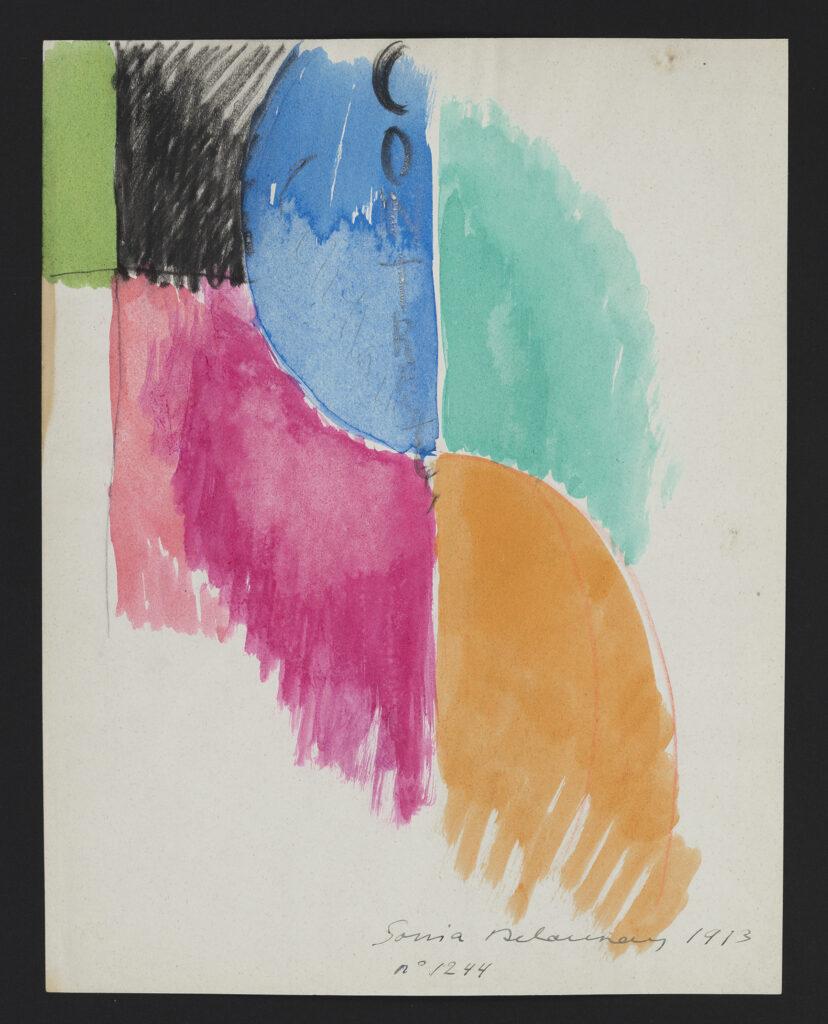
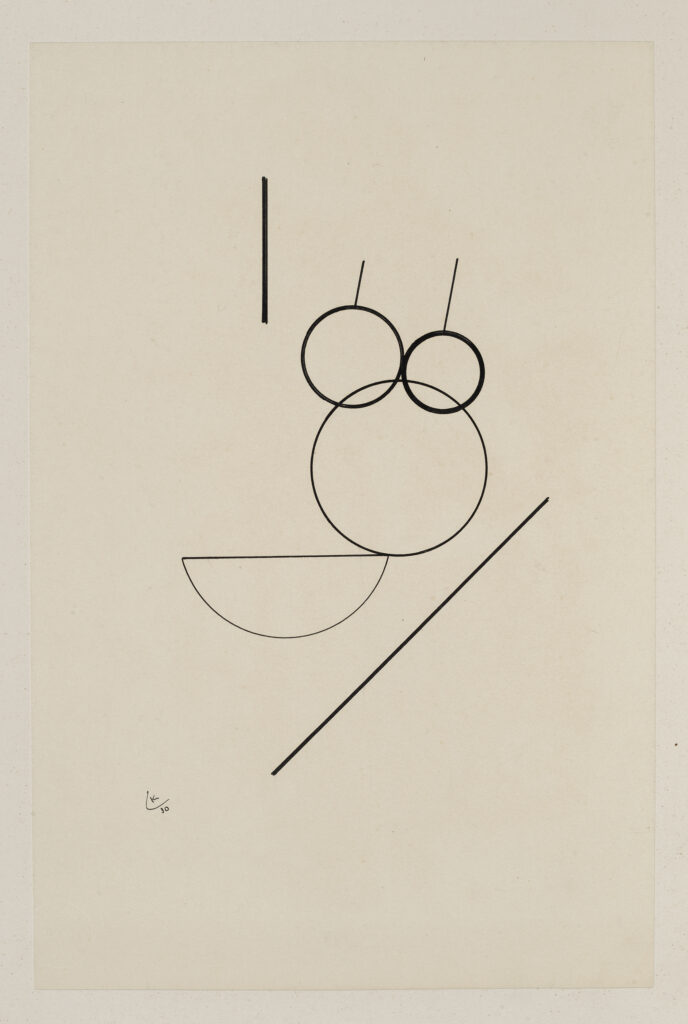
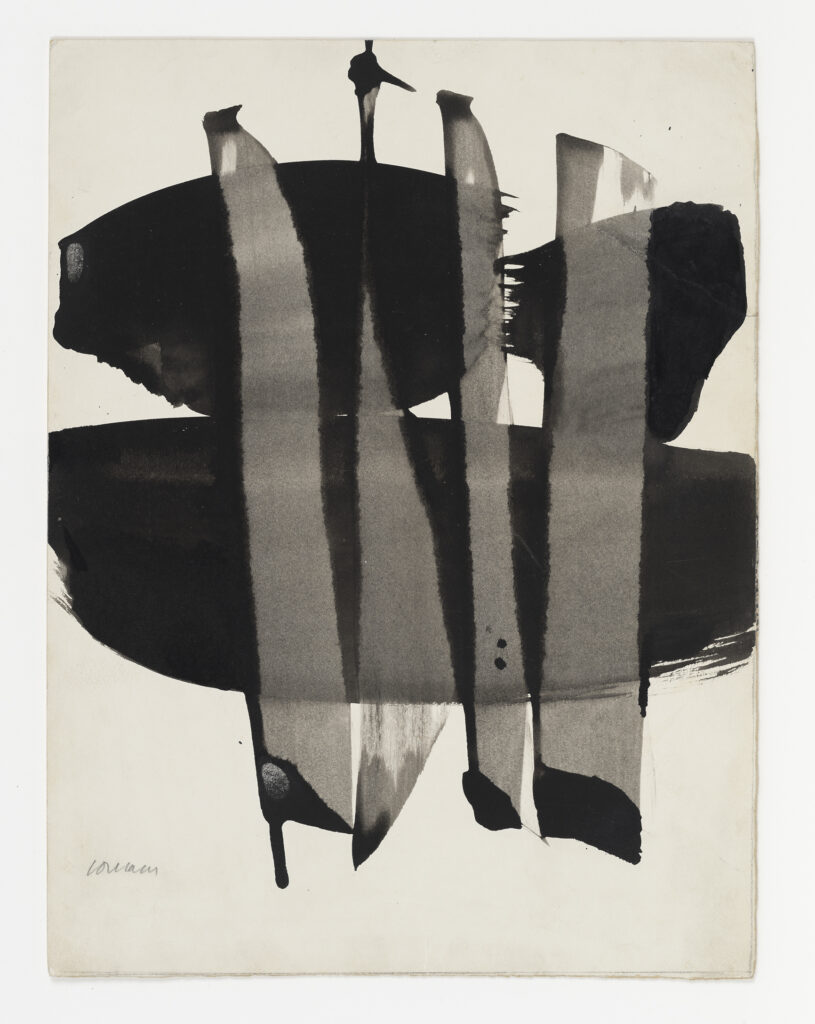
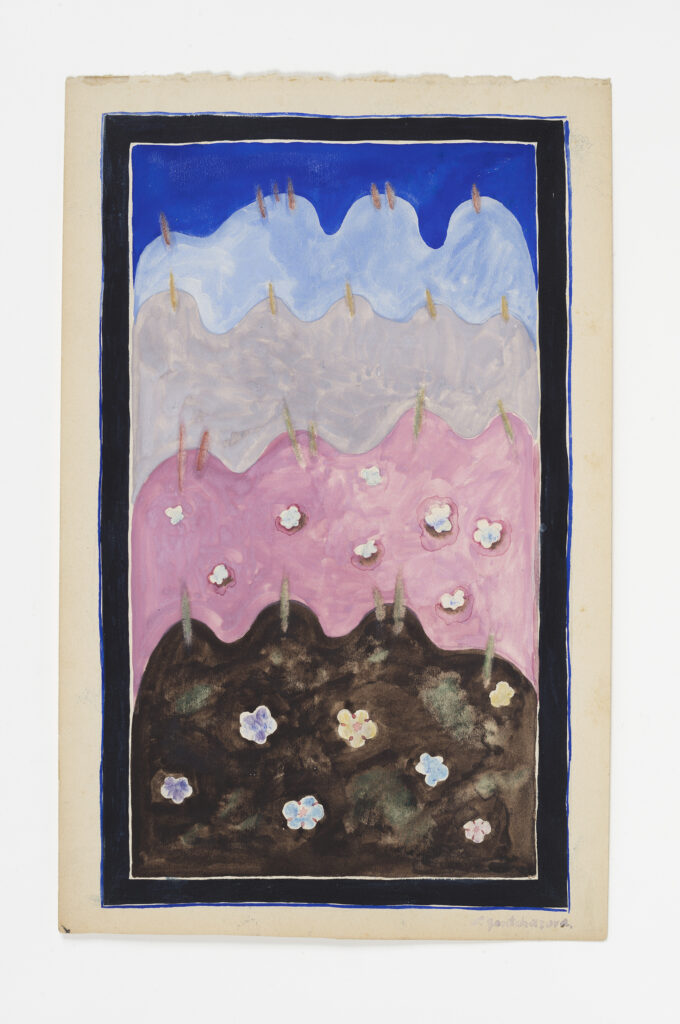
An art critic, curator, bookseller, art publisher and magazine creator, Imre Pán (1904 – 1972) was one of the leading figures in twentieth-century Hungarian artistic life. An early participant in the avant-garde movements, he and his brother founded several magazines to which many Hungarian and European painters and artists contributed, including Jean Arp. In 1935, Pán opened a bookshop-gallery that became a popular meeting place for the Budapest intelligentsia. After the war (during which he had to live in hiding), Pán organised no less than thirty-eight exhibitions in the space of three years. In particular, he exhibited the surrealist painter Jacques Doucet and the Dutch artist Corneille. It was also the meeting place for the European School (of which Pán was one of the founders), a gathering of intellectuals aiming to open up Hungary culturally. This effervescence lasted until 1948, when Stalin’s cultural policy led to the dissolution of the European School and the closure of the bookshop.
In 1957, following the brutal repression of the Budapest uprising, Pán decided to leave Hungary and settle in Paris. There he met up with well-known artists such as Doucet and Corneille, as well as the Hungarian artistic diaspora: Étienne Hajdu, Anton Prinner, Árpád Szenes, Vasarely and Endre Bálint. He also came into contact with artists linked to the new avant-garde movements emerging on the Parisian scene in the late 1950s and early 1960s. Before long, Pán was actively involved in the Parisian art world. During the 1960s, he organised numerous exhibitions in collaboration with friendly galleries (such as La Main Gauche, La Roue and Le Point Cardinal), showcasing the work of artists as diverse as Jean Arp and Sophie Taeuber-Arp, Georges Braque, André Masson, Fernand Léger, Sonia and Robert Delaunay, Max Ernst, Hans Bellmer and Unica Zurn, Natalia Goncharova and Mikhail Larionov, Corneille, Pierre Vasarely, Serge Poliakoff, André Marfaing, Colette Brunschwig, Marcelle Cahn, Roberto Matta and Margit Anna, to name but a few. Most of them featured in the 150 or so art publications he edited from 1960 onwards, and which he developed and expanded until his death in 1972.
While the Galerie Jocelyn Wolff pays tribute to his career as an art publisher (Imre Pán. Une histoire artistique et éditoriale européenne dans le Paris des années 1960, from 3 March 2024, curated by Marjorie Micucci), Abraham & Wolff is honouring another facet of his prolific activity: that of collector.
Combining his in-depth knowledge of the avant-garde with his great sensitivity, Imre Pán amassed an exceptional collection throughout his life. Both in Budapest and in Paris, he acquired works from gallery owners as well as from artists he admired and whose studios he liked to visit. He mainly bought small-format works on paper, sketches and preparatory drawings, fascinated by these works in which art is in the process of being made.
Described as a “historical collection” by Imre Pán himself, the ensemble we are presenting here is just one part of his collection. It comprises 53 works on paper covering a period from 1910 to 1968. Two generations of artists come together to form a veritable panorama of European art from the first half of the twentieth century and the post-war period, all trends taken together. It has to be said that the story Pán tells here has, for the most part, been validated by posterity.
With works by Natalia Goncharova, Mikhaïl Larionov, Roger de La Fresnaye, Sonia Delaunay, Albert Gleizes, Otakar Kubín, Suzanne Duchamp, Max Jacob, Leopold Survage, Ossip Zadkine, André Bauchant, Sophie Taeuber-Arp, Bela Kadar, Marcel Gromaire, Léon Tutundjian, André Derain, Pierre Tal Coat, Francis Picabia, Vassily Kandinsky, Maurice Estève, Georges Valmier, Salvador Dalí, Lajos Vajda, Hans Reichel, Yves Tanguy, Gaston Chaissac, Wilfredo Lam, Jean Arp, Christine Boumeester, Max Ernst, Jean Fautrier, Jacques Villon, André Heurtaux, Henri Matisse, Wols, Victor Vasarely, Óscar Domínguez, Auguste Herbin, Corneille, Pierre Soulages, Camille Bryen, Raoul Ubac, Roberto Matta, Henri Michaux, Hans Bellmer, Maria Helena Vieira da Silva, Alberto Giacometti, Asger Jorn and Pablo Picasso.
Jocelyn Wolff and Samy Abraham would like to extend their warmest thanks to Sophie Pán, who opened up her father’s archives and collection to us in preparation for this exhibition.
Gabetti and Isola – Another modernism
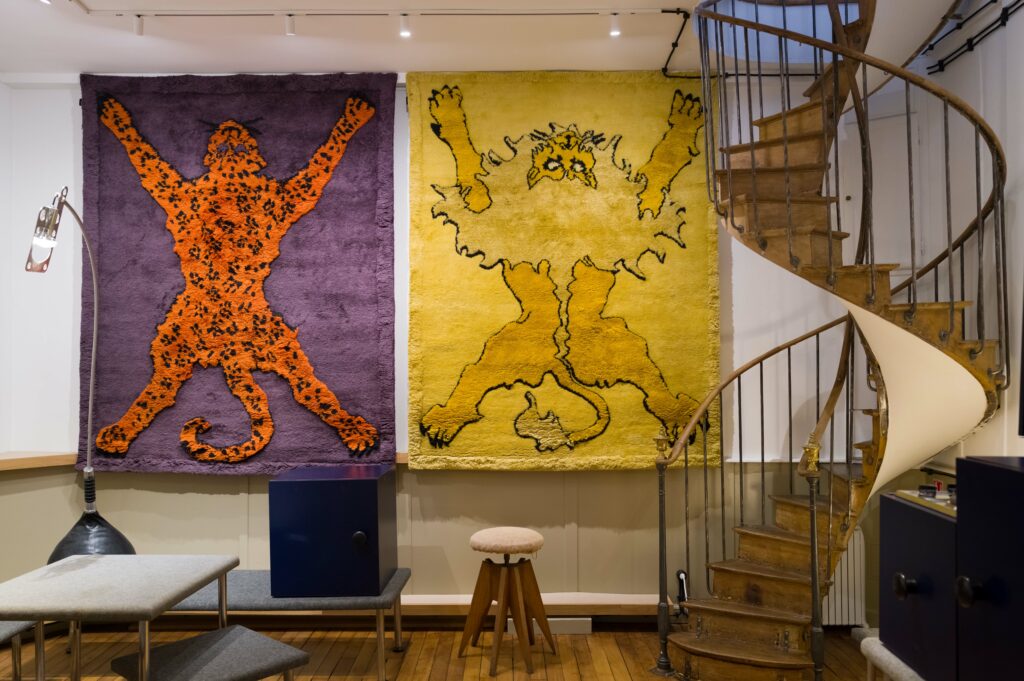
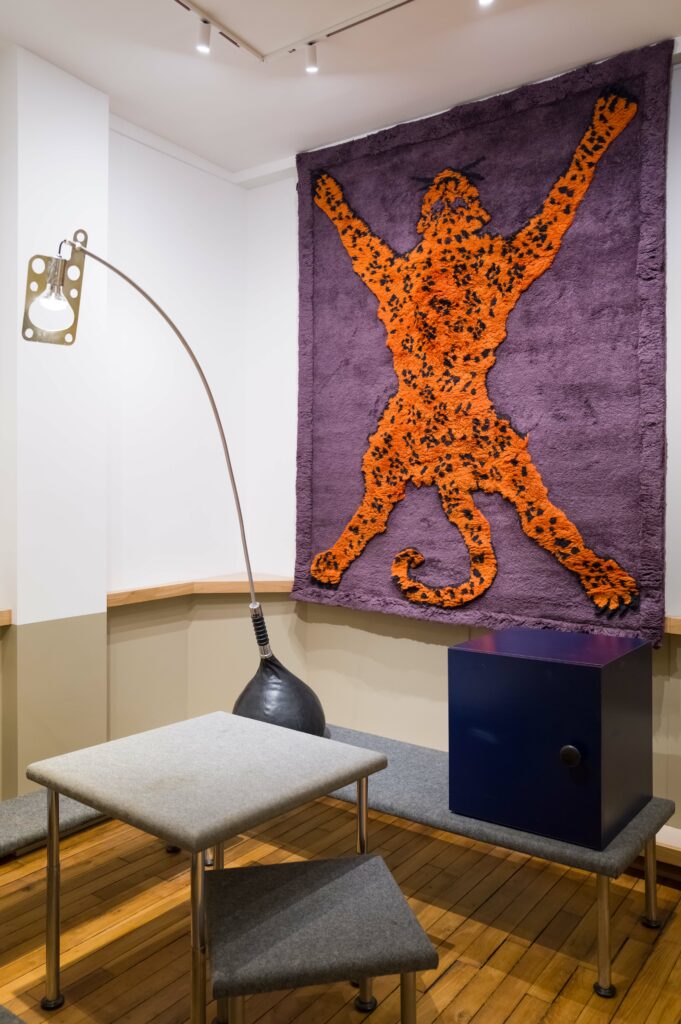
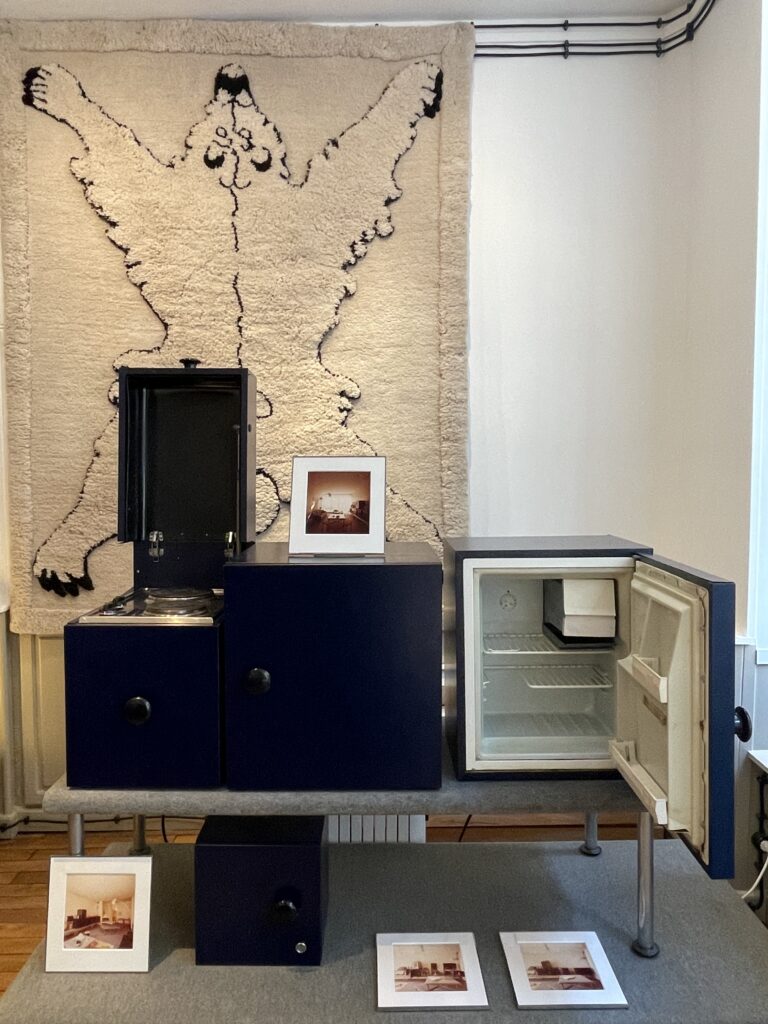
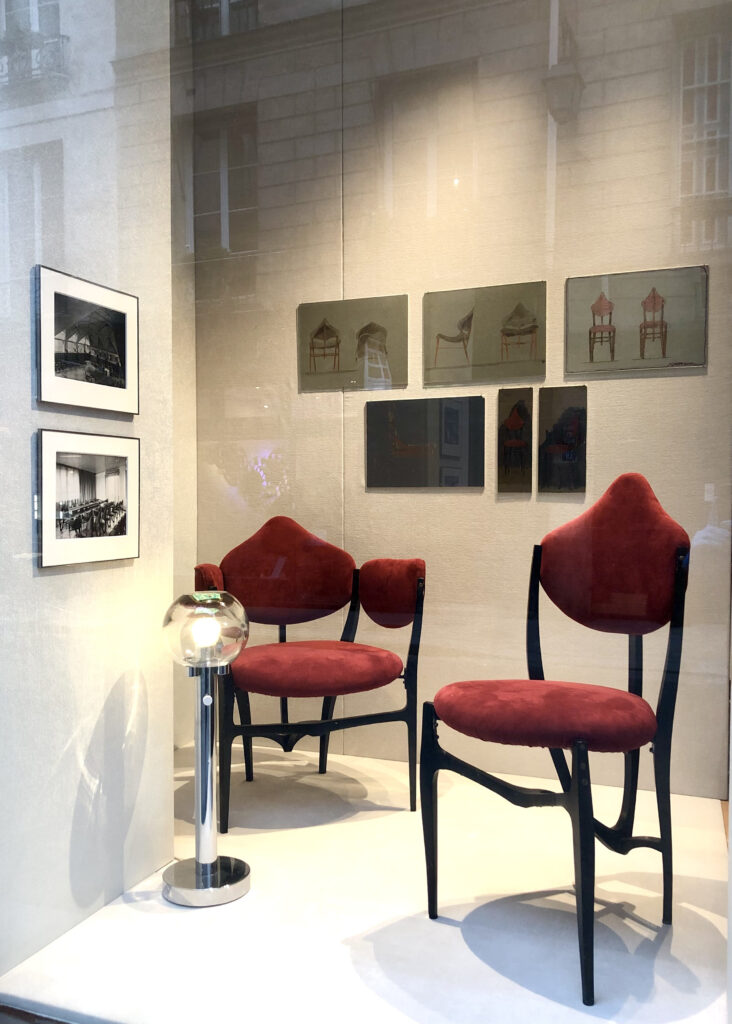
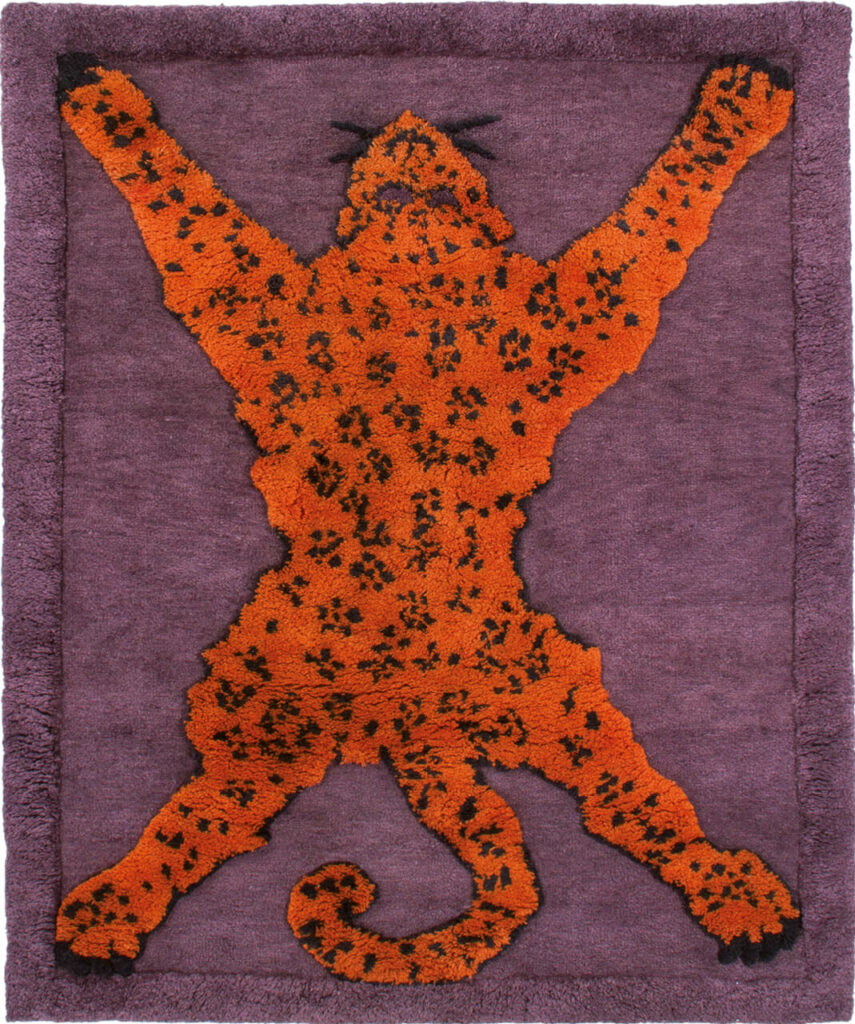
For our first exhibition of 2024, we are delighted to present a rare and previously unseen collection of furniture and drawings by the Turin-based architecture and design duo Gabetti and Isola.
Challenging the precepts of modernism and international style, Roberto Gabetti (1925-2000) and Aimaro Isola (1928-) set themselves apart in the early 1950s with an original vision of the avant-garde rooted in Italian architectural tradition and the art nouveau style. Seeking a harmonious dialogue between the building and its urban context, their style is characterized by pure lines, daring geometric shapes, ornamentations and the combined use of modern and traditional materials. Although the two men later borrowed certain features from the techno aesthetic, they nevertheless continued to attach fundamental importance to the landscape value of their projects, ensuring that each building was at one with its natural surroundings, using materials such as wood and stone.
Their most notable works include the Borsa Valori (Turin, 1956), and the housing and furnishings of the Talponia complex (Ivrea, 1971), designed for the Olivetti residential center in Ivrea, which is now a UNESCO World Heritage site.
The first major exhibition devoted to Gabetti and Isola in France since their retrospective at the Institut Français d’Architecture in 1996, Gabetti and Isola – Another modernism focuses on these two emblematic buildings through an exceptional selection of their respective furniture. Roberto Gabetti and Aimaro Isola conceived their projects as total works, designing furniture, lamps and carpets as an extension of their architectural principles. Renowned for their originality, their creations have been included in the collections of the MoMA in New York, the Centre Pompidou in Paris and Maxxi in Rome. Abraham & Wolff will also be showing a never-before-seen series of preparatory sketches and technical drawings by Aimaro Isola that illustrate the development of these pieces.
Jocelyn Wolff and Samy Abraham would like to extend their warmest thanks to Aimaro Isola and his son Hilario, who opened up the resources of their archives, reserves and memories to us in preparation for this exhibition.
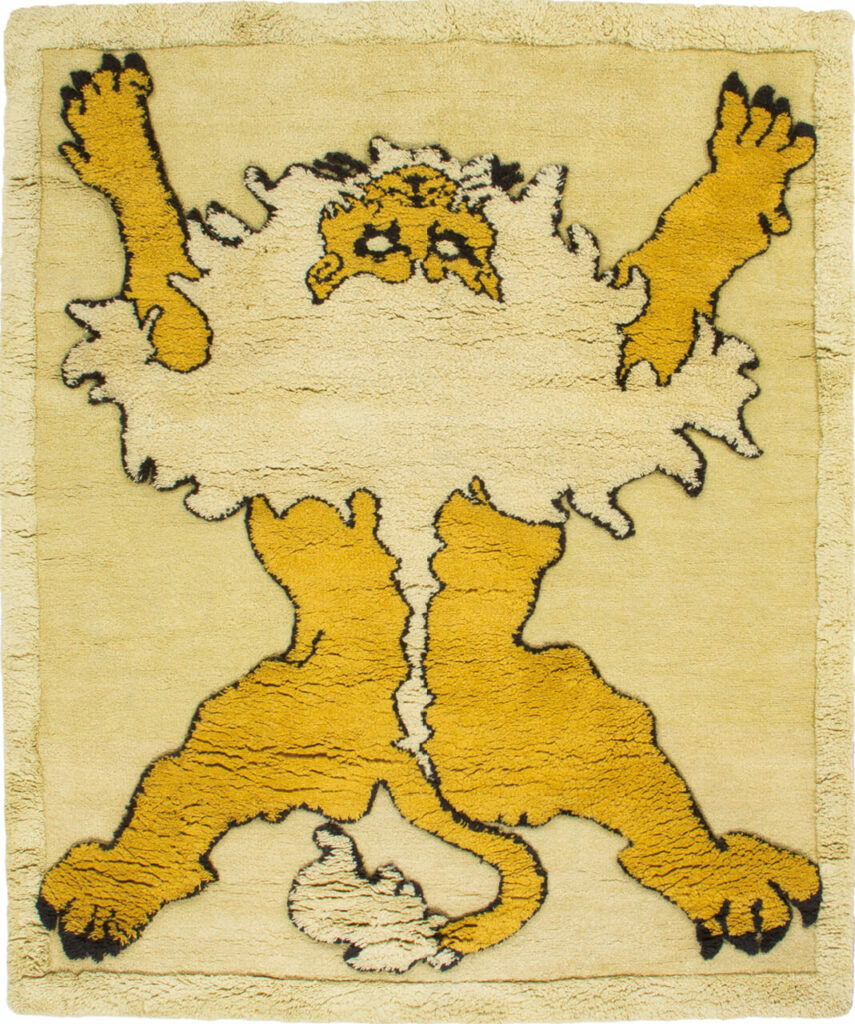
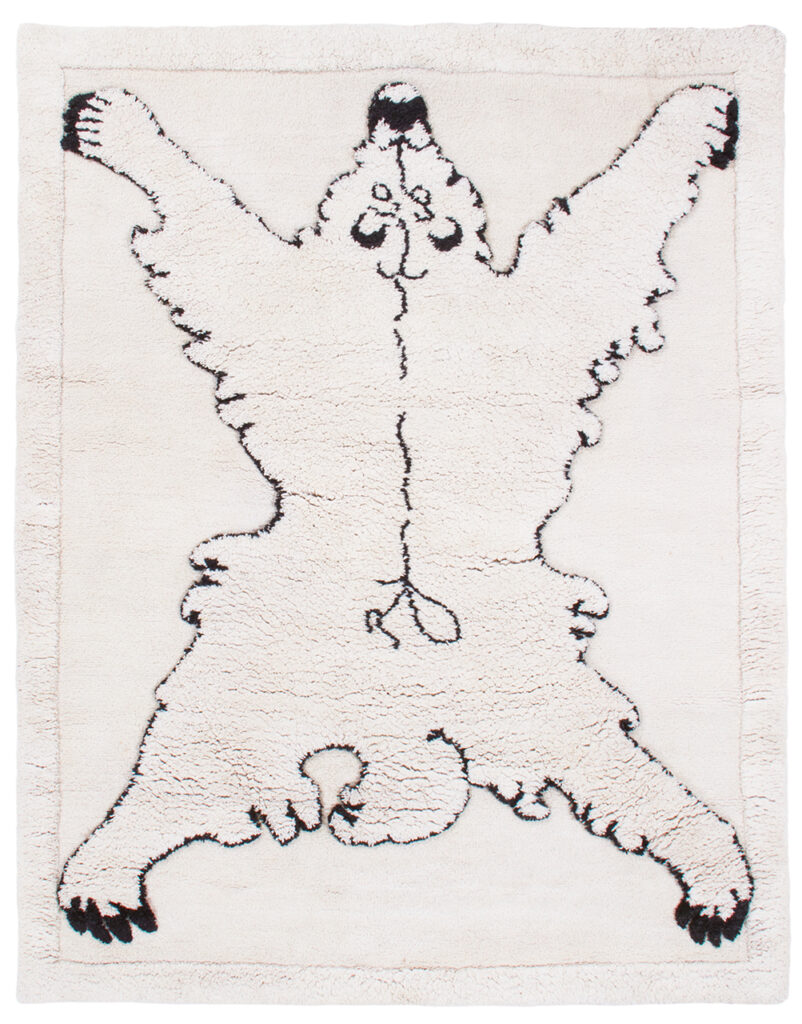
Anastasi, Bianchi, Bock, Botella, Boucher Morales, Brunschwig, Cahn, Lamiel, Melsheimer, Nemours, Oberhuber, Perdrix, Prinz Gholam, Tropa, Venini and four angels.
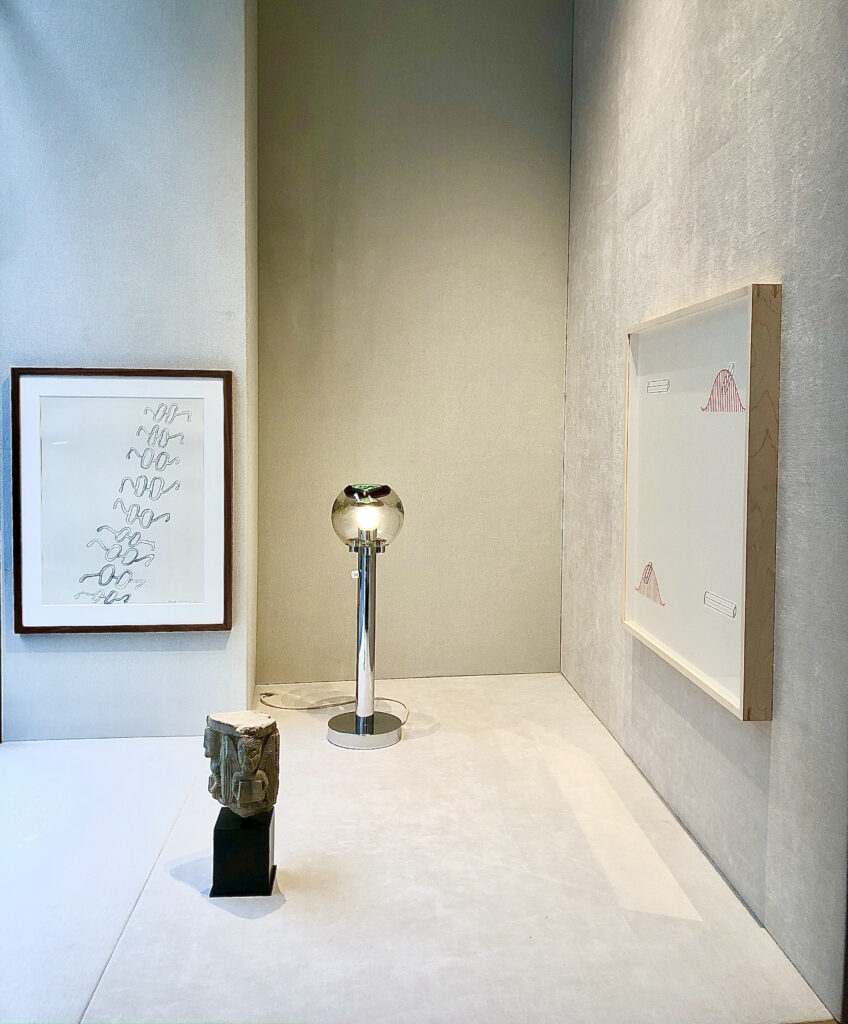
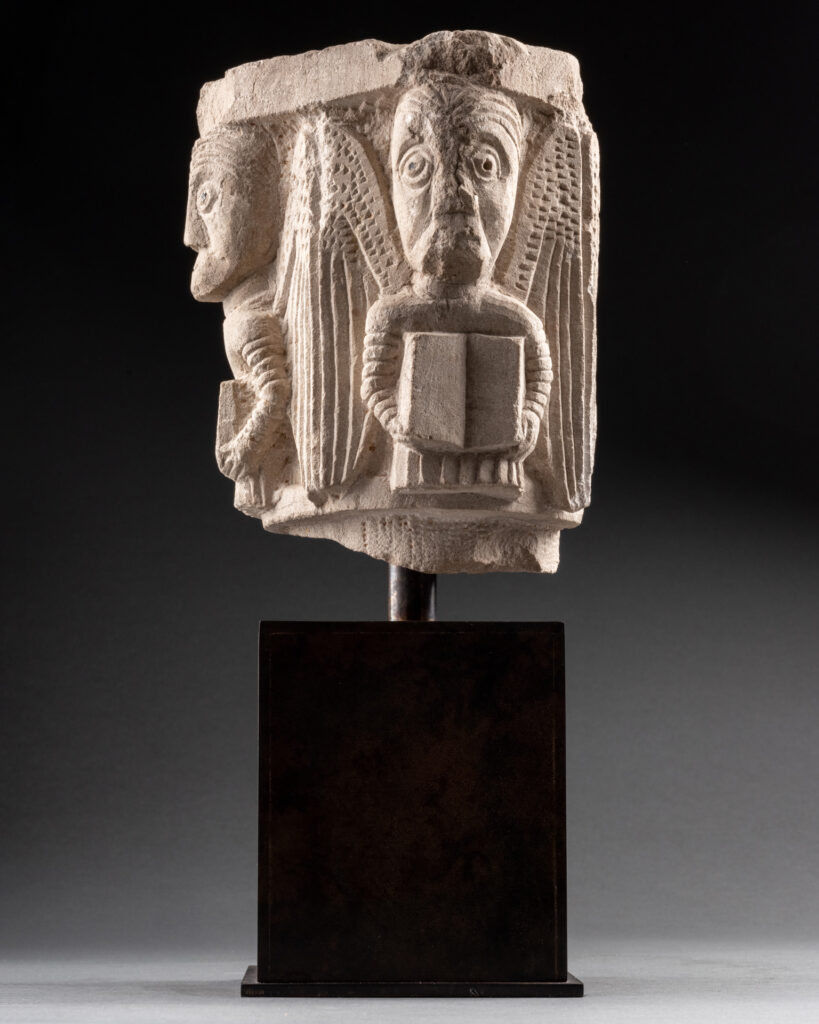
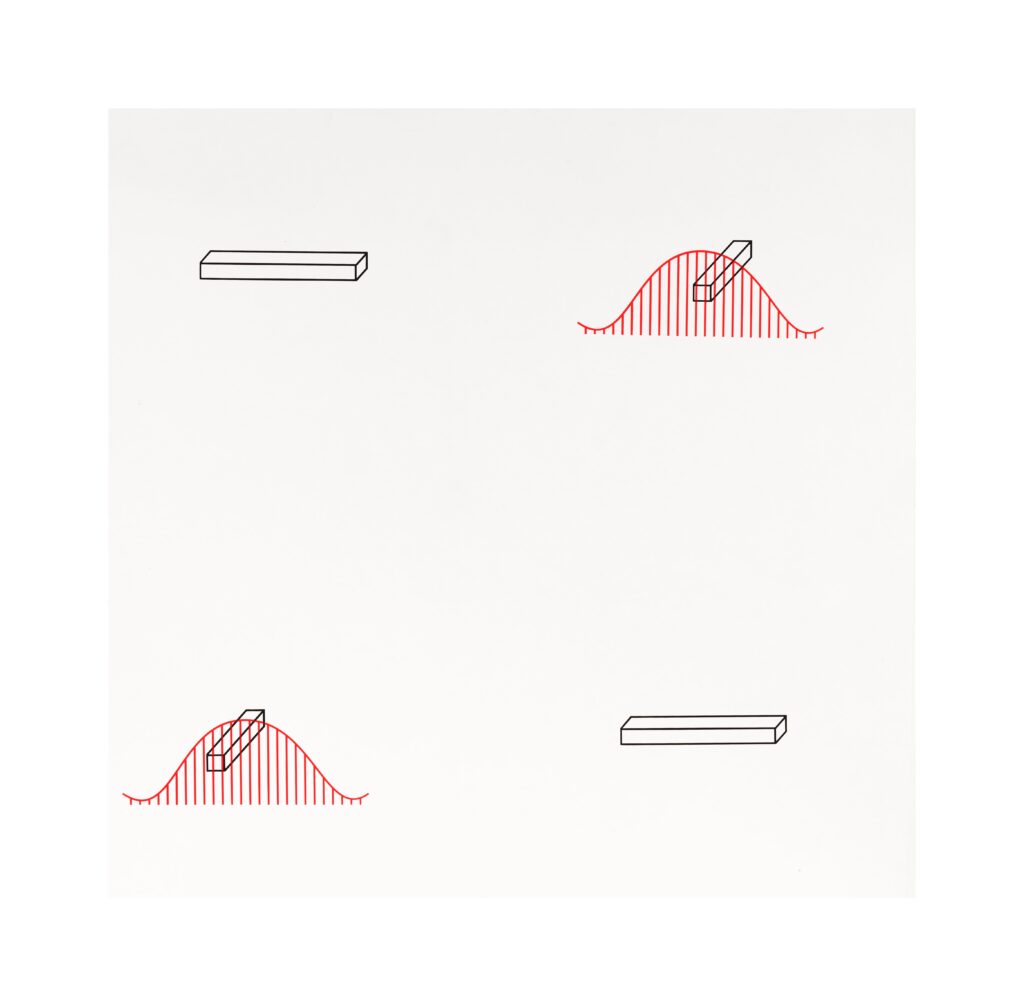
For this new exhibition, Abraham & Wolff is proposing an evolving display in the form of a retrospective. A constantly renewed dialogue between the artists who have marked our first year of programming.
Including contemporary sculptures and drawings, editions, multiples and Italian design, this selection of works by William Anastasi, Diego Bianchi, Bruno Botella, Mélissa Boucher Morales, Colette Brunschwig, Miriam Cahn, Aurelie Nemours, Oswald Oberhuber, Jean-Marie Perdrix, Prinz Gholam, Francisco Tropa and Venini is accompanied by an exceptional late 11th-century Romanesque capital from the Alexandre Piatti Gallery in Paris
We would also like to take this opportunity to thank the galleries who made many of our projects possible : Compasso Gallery in Milan, Gallery Marcelle Alix in Paris and KOW Gallery in Berlin.
Mélissa Boucher Morales – Scrolling [faire défiler]
![Mélissa Boucher Morales, Scrolling [faire défiler], 2021-2022, silver photography, inkjet prints and dielectric glass Black and white silver photograph under dielectric glass by Mélissa Boucher representing an open mouth](https://www.abraham-wolff.com/wp-content/uploads/2023/11/Scrolling-MB_-6-1-726x1024.jpg)
![Mélissa Boucher Morales, Scrolling [faire défiler], 2021-2022, silver photography, inkjet prints and dielectric glass Black and white silver photograph under dielectric glass by Mélissa Boucher representing feet](https://www.abraham-wolff.com/wp-content/uploads/2023/11/faire-defiler-BD_7-1-721x1024.jpg)
![Mélissa Boucher Morales, Scrolling [faire défiler], 2021-2022, silver photography, inkjet prints and dielectric glass Black and white silver photograph under dielectric glass by Mélissa Boucher representing a closed eye](https://www.abraham-wolff.com/wp-content/uploads/2023/11/Scrolling-MB_-2-1-1024x683.jpg)
Mélissa Boucher Morales develops photographic projects, videos and artist’s editions in which she explores the possibilities and limits of the image, its process of appearance and disappearance, through forms and notions linked to the representation of the intimate. As part of this research, the Scrolling project (2021-2022) was born of the artist’s reflection on the production of images and their alteration, but also of a desire to create an alternative reading to the fascination exerted by pornographic content. Using film to photograph streaming videos of amateur cam girls, postporn and feminist pornography, the artist has captured intimate gestures and isolated fragments of bodies, gestures and attitudes that would otherwise have been lost in the flow. From these details, these images hidden within the image, the artist brings out a new sensuality. She subjects them to a specific film treatment that gives the models a spectral appearance (in contrast to the flesh brutally exposed by the camera), then superimposes a dielectric pane – a glass whose reflective qualities seem to send the viewer back to his or her role as voyeur – a new screen through which she reappropriates not only the image but also the initial viewing device.
To coincide with the PhotoSaintGermain festival, which runs from 2 to 25 November 2023, Abraham & Wolff is pleased to honour the work of Mélissa Boucher Morales by exhibiting a selection of works from Scrolling [faire défiler].
Natura Pictrix, tribute to Roger Caillois
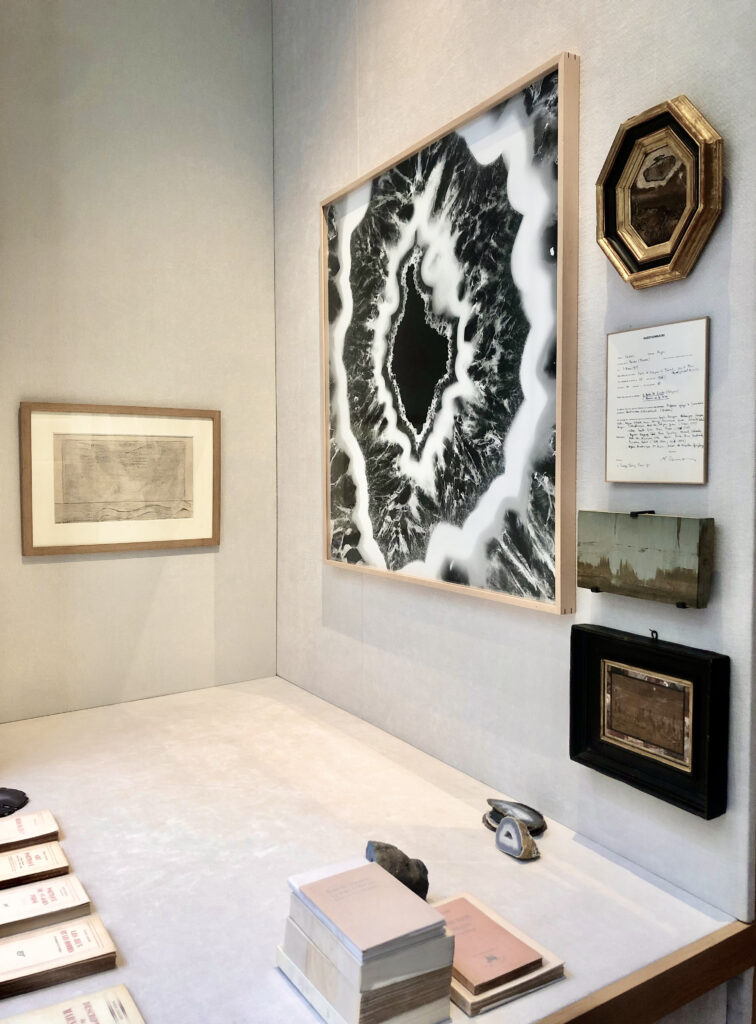
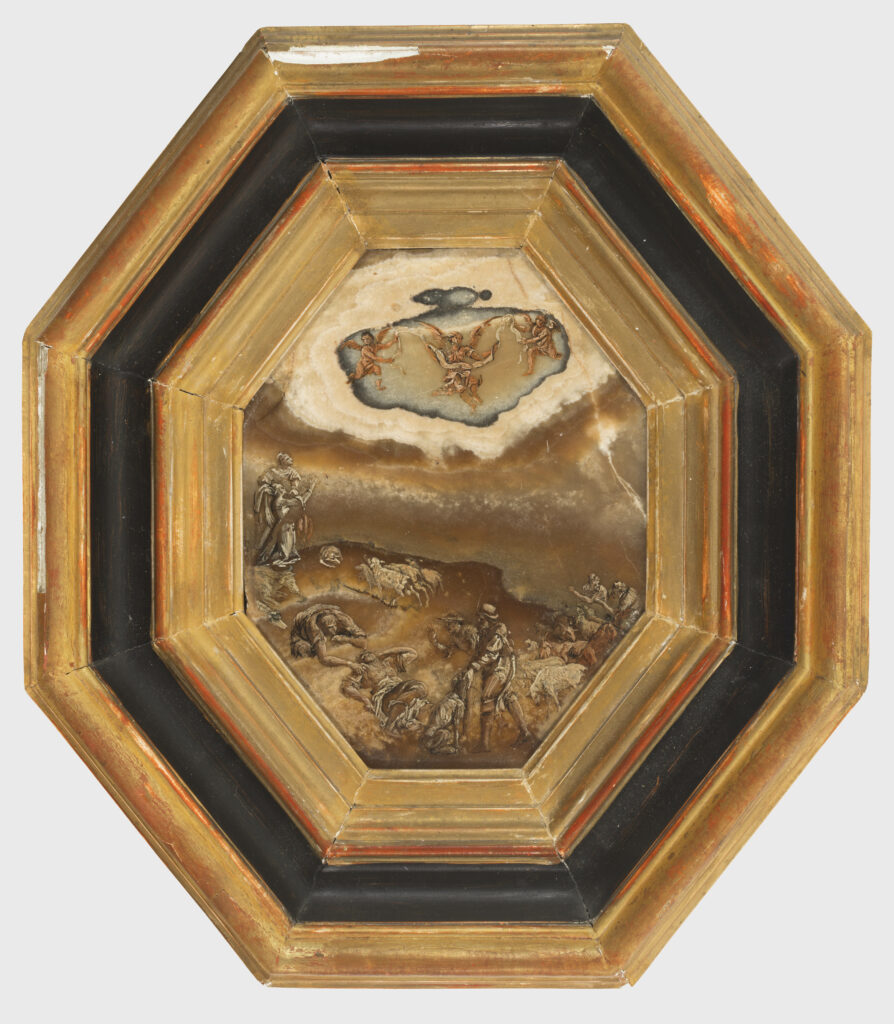
![Anonymous, [3 figures painted on a paesina plaque], oil on paesina plaque, 14.5 x 27.5 x 4 cm framed Anonymous oil painting on a paesine plaque depicting a woman and a man walking in a rocky landscape](https://www.abraham-wolff.com/wp-content/uploads/2023/10/L1009188-2-1024x683.jpg)
![Anonymous, [Spanish oil on travertine representing Madonna and Children], circa XVIIth, oil on travertine, 21 x 16 x 0,8 cm 17th-century oil painting on travertine attributed to an anonymous Spanish artist, depicting the Virgin Mary and the Christ Child](https://www.abraham-wolff.com/wp-content/uploads/2023/10/L1009200-2-842x1024.jpg)
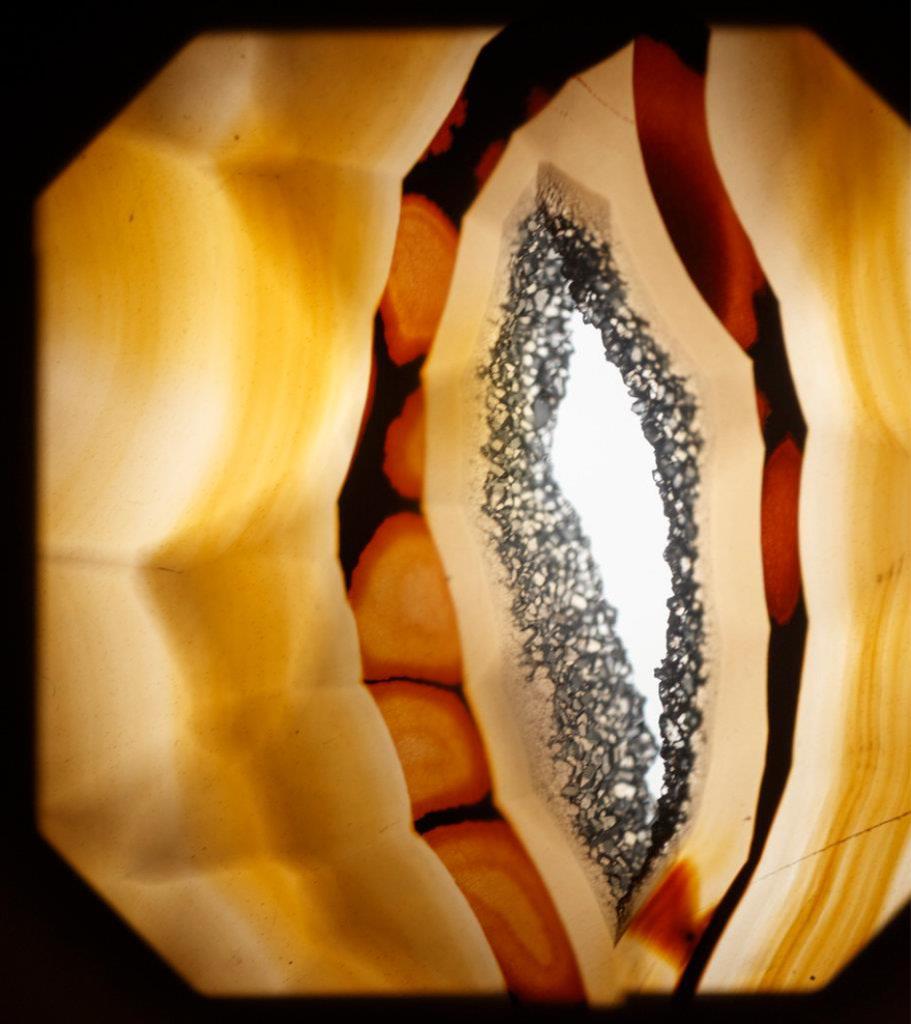
Writer, thinker and collector Roger Caillois (1913-1978) was one of the most original figures in twentieth-century French intellectual life. In the course of a rich and eventful career, Caillois was in turn close to the Grand Jeu and then the Surrealists, founder of the Collège de Sociologie alongside Georges Bataille and Michel Leiris, director of a literary magazine in Argentina, editor and translator promoting South American literature in France (he revealed Jorge Luis Borges), then a civil servant at UNESCO and finally a member of the Académie Française.
Working at the crossroads of multiple disciplines, his prolific work includes over thirty books on subjects as diverse as religious mantes, myths, the sacred, games, dreams, mimicry, war, and stones. This seemingly disparate corpus finds its coherence in a major idea that obsessed Caillois: the unity of the world. In his view, nature is woven from a single fabric that manifests itself in hidden analogies between natural phenomena. Identifying and classifying all the analogies that unite the different kingdoms of nature would reveal the poetic structure of the world.
It was when he drew a similar connection between the metallic moiré of a mineral, labradorite, and the iridescence of the wings of a butterfly, morpho, that Caillois began to take an interest in stones. From a simple subject of study and curiosity, they soon became a true obsession. Fascinated by the evocative power of certain specimens, in which the imagination believes it recognises the more or less faithful representation of real objects, Caillois began to collect the strangest, most graphic minerals, the most fertile in simulacra and symbols, building up a large collection, the finest pieces of which are now on display in Paris museums.
Although he was wary of the charms of the fine arts and literature, he never tired of contemplating his imagery stones. “I prefer their drawings to the paintings of painters, their forms to the sculptures of sculptors, so much so that they seem to me the works of an artist less deserving but more infallible than them”. (in Pierres, Gallimard, 1966) The deciphering of stones thus inspired one of his great ideas. Although we cannot equate minerals with works of art as such, i.e. with deliberate creations, it nevertheless seems that nature can sometimes merit the title of artist and stones that of natural works of art. Natura pictrix, nature as painter, as Caillois called it (in Méduse et Cie, Gallimard, 1960), is a formidable competitor to artists, having boldly preceded their discoveries of yesterday and today.
This original reflection owes much to Caillois’s oft-repeated study of one stone in particular: paesine. Paesine is a microcrystalline limestone found in Tuscany, in the Florence region. After cutting and polishing, these stones reveal patterns that disturbingly suggest a whole range of landscapes: towns and villages with ruined buildings, panoramas of skyscrapers, cliffs on the coast, sea caves, raging seas, tormented skies and so on. Hence the name “landscape marble” or “marble-ruin”.
Paesines were very popular in the 16th and 17th centuries. Highly sought-after, they adorned the curiosity cabinets of the Medicis, Gustavus-Adolphus of Sweden and Rudolf II of Habsburg. They were used in the composition of sumptuous stone marquetry. The most striking of them were even framed to give them the status of real paintings. Natural paintings whose aesthetic value, not to say artistic, the artists themselves recognized, to the point of sometimes swapping the canvas for the mineral.
Doubtless with the help of stone-cutters, they chose the paesine, jasper, marble or lapis lazuli whose colours and veins best lent themselves to their imagination, and populated them with figures, trees, animals and objects. Painters such as Sebastiano del Piombo (1485-1547), Antoine Carrache (1583-1618), Johann König (1586-1642) and Mathieu Dubus (1590-1665) thus took advantage of the natural settings available to them to compose religious and mythological scenes in which art and nature converse and merge.
Natura Pictrix pays tribute to Caillois as an original thinker and a great collector, as well as to the tradition of stone painting that he so effectively brought to light. The exhibition brings together a selection of anonymous painted stones dating from the 17th century, some exceptional paesines, and a frottage by Max Ernst that once belonged to Caillois. It is also an opportunity for historical creation to meet contemporary art, with previously unseen works by the sculptor Francisco Tropa, for whom agate blades occupy a special place.
Prinz Gholam – There are Eyes
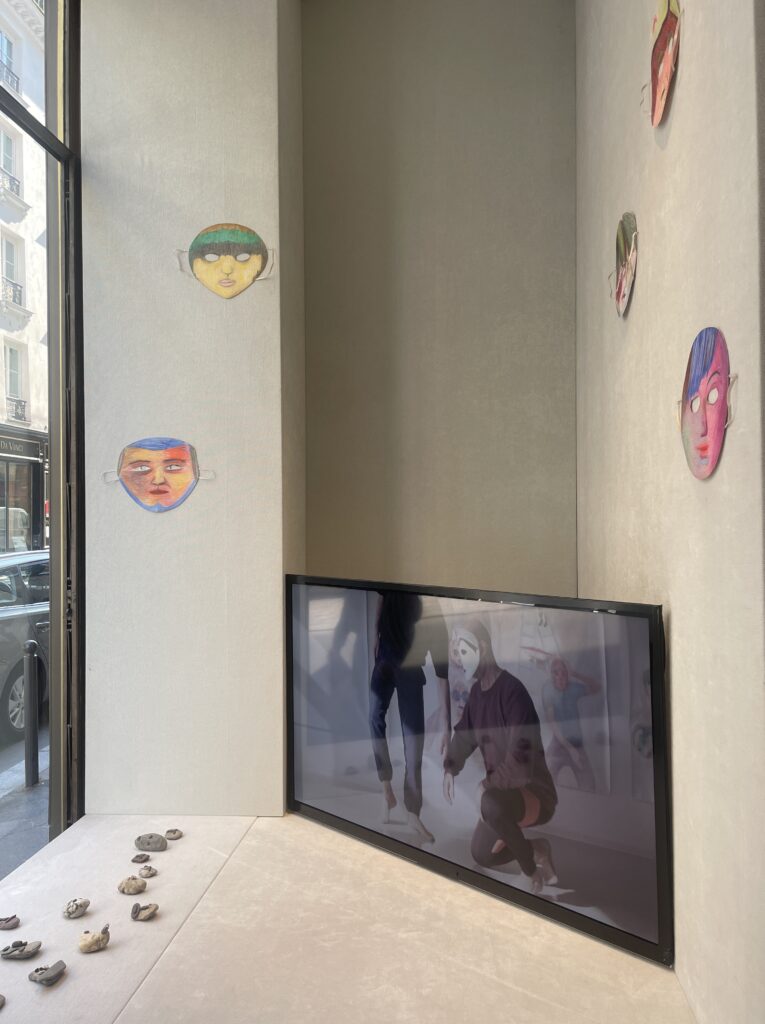
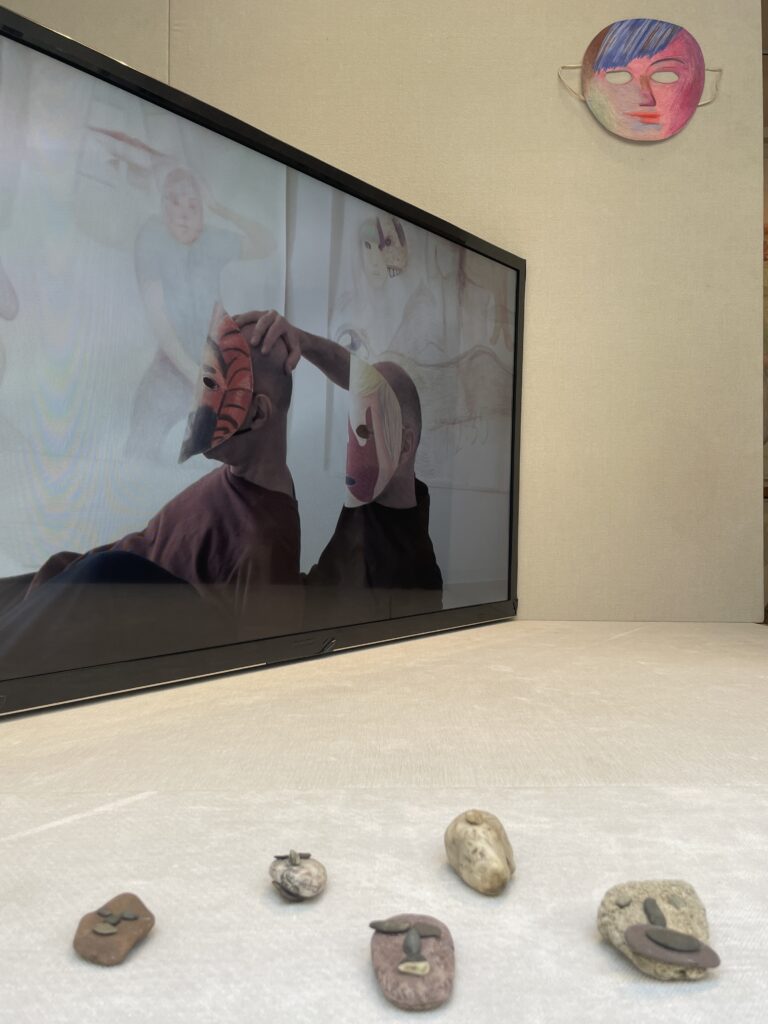
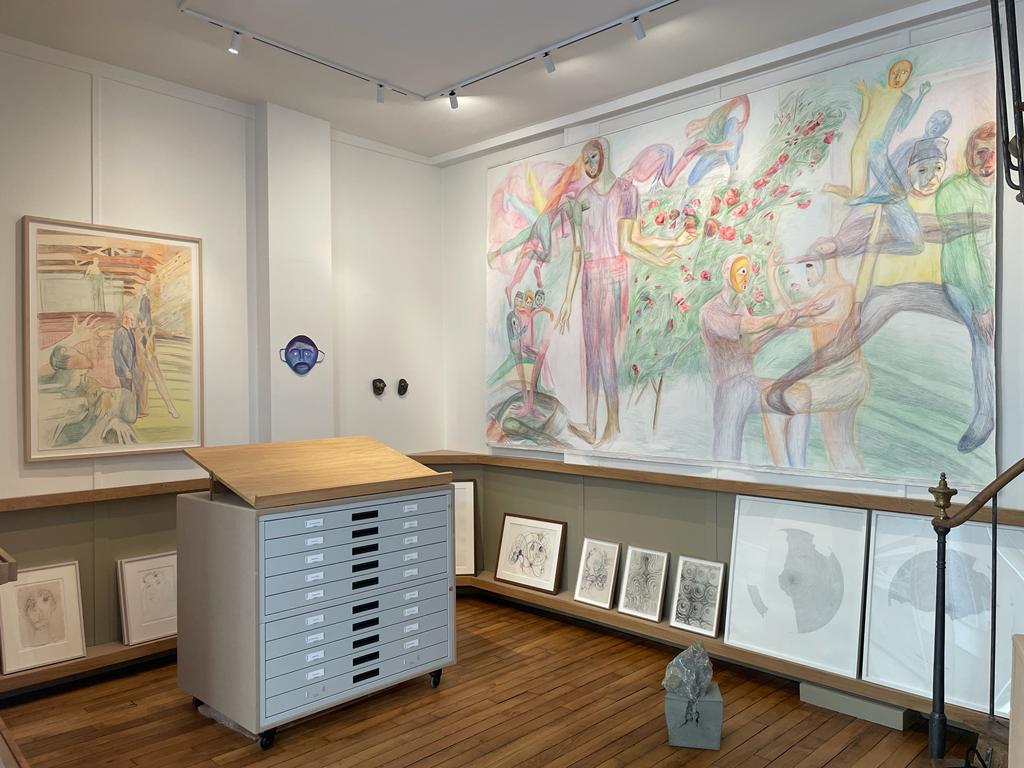
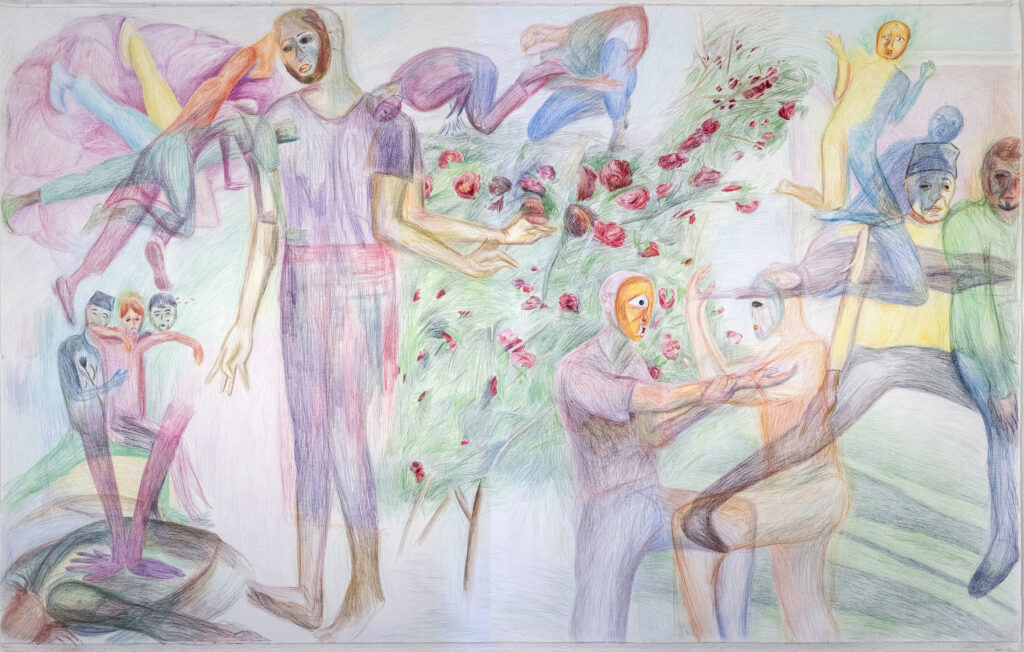
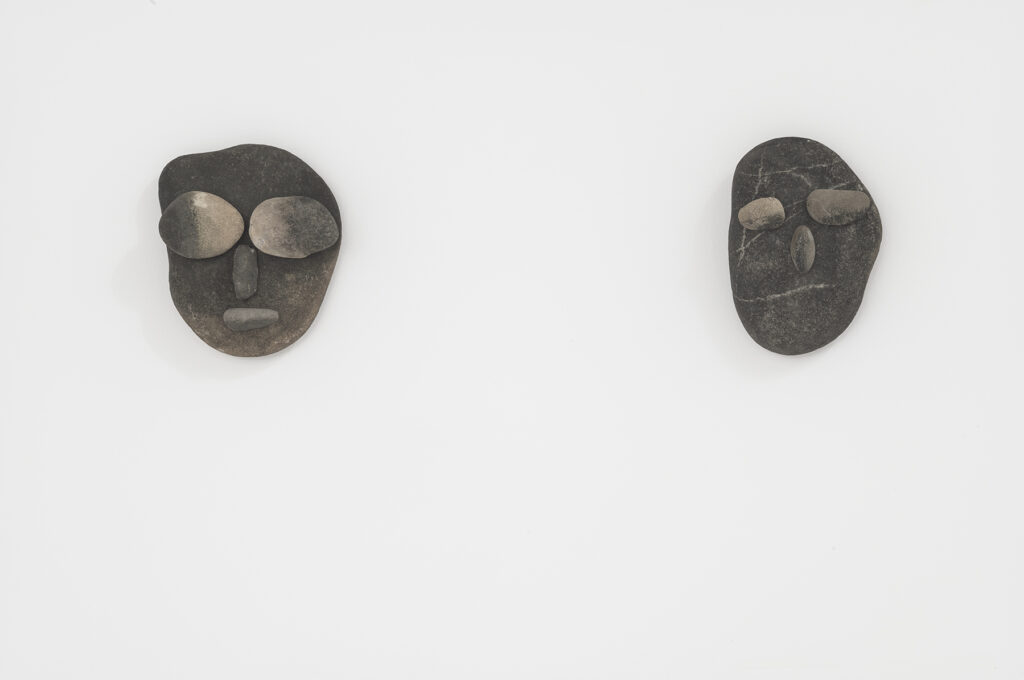
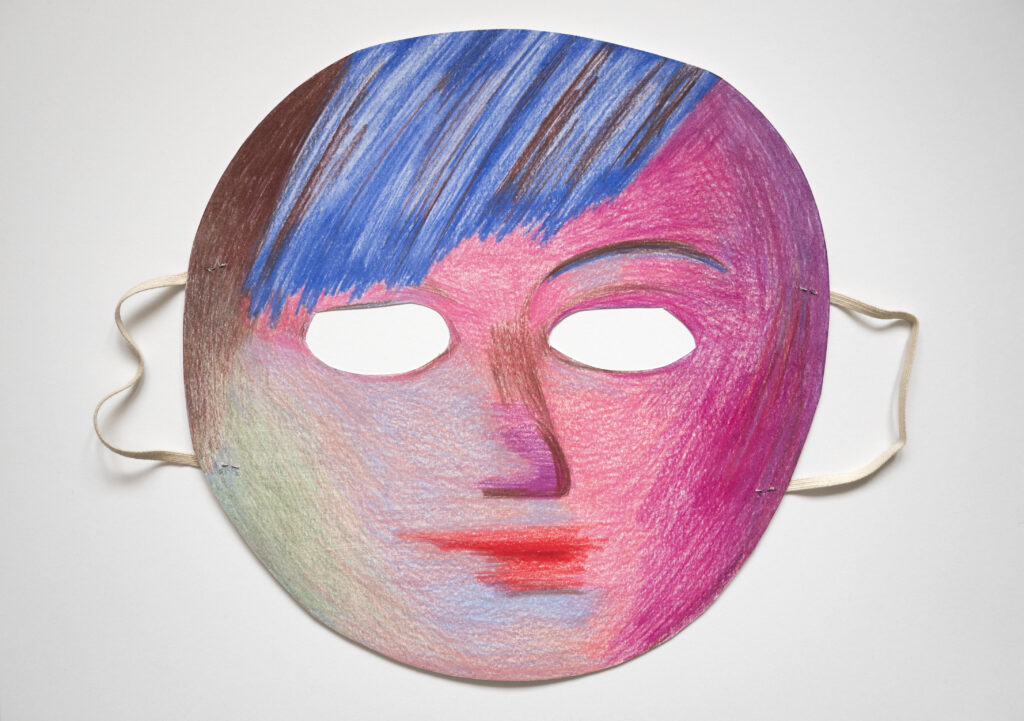
Formed by Wolgang Prinz (born in 1969) and Michel Gholam (born in 1963), the Prinz Gholam duo has developed a performance practice over the last 20 years in which the two artists use their bodies to reinterpret a wide range of cultural references, from ancient painting to sculpture, contemporary art, cinema and media images. The two men internalise and embody these cultural stereotypes through precise choreographies in which they execute a succession of carefully chosen poses, moving like living sculptures.
Slow and fluid, giving a sense of the passage of time, their gestures make no attempt to approach the aestheticism of a danced choreography. In their alternation between movement and pose, the bodies of the two artists become less the vehicle of an emotion than of a story, that of the representation of the body. By reinterpreting the images that make up this story, the duo show how our bodies and gestures – and with them our identity – are shaped by the assimilation of a dominant cultural canon.
Each of Prinz Gholam’s performances is accompanied by an intense process of creating visual material and performative elements (videos, photographs, objects, installations), in which the practice of drawing now occupies an important place. The two artists see drawing as a field of experimentation in which they can spontaneously imagine and project the gestures, postures and props that will form part of their choreography, and the way in which they will relate to each other. Using large-format coloured pencil drawings, they create a multitude of figures, some of which evolve in a representation of the very space in which the performance will take place. It’s a constellation of bodies at liberty, announcing the tone of the performance and foreshadowing, through the images, the process of reinterpreting history.
For this new exhibition entitled There are Eyes, Abraham & Wolff is pleased to present large-scale drawings made for two performances, L’esprit de notre temps (Mattatoio, Rome, 2021) and Similitude (Punta della Dogana, Venice, 2018), as well as a series of paper masks and faces made from stone assemblages that bear witness to their multidisciplinary practice. Masks, historically and symbolically charged objects, have recently appeared in Prinz Gholam’s work, accentuating the hieratic and theatrical nature of their choreographies while at the same time deepening their reflection on identity. This research seems to be echoed by the groups of faces that the artists have been making using stone gleaned from the four corners of the world over the last few years. The video projection of several extracts from these performances gives visitors an insight into the complex relationship between these different elements.
Katinka Bock
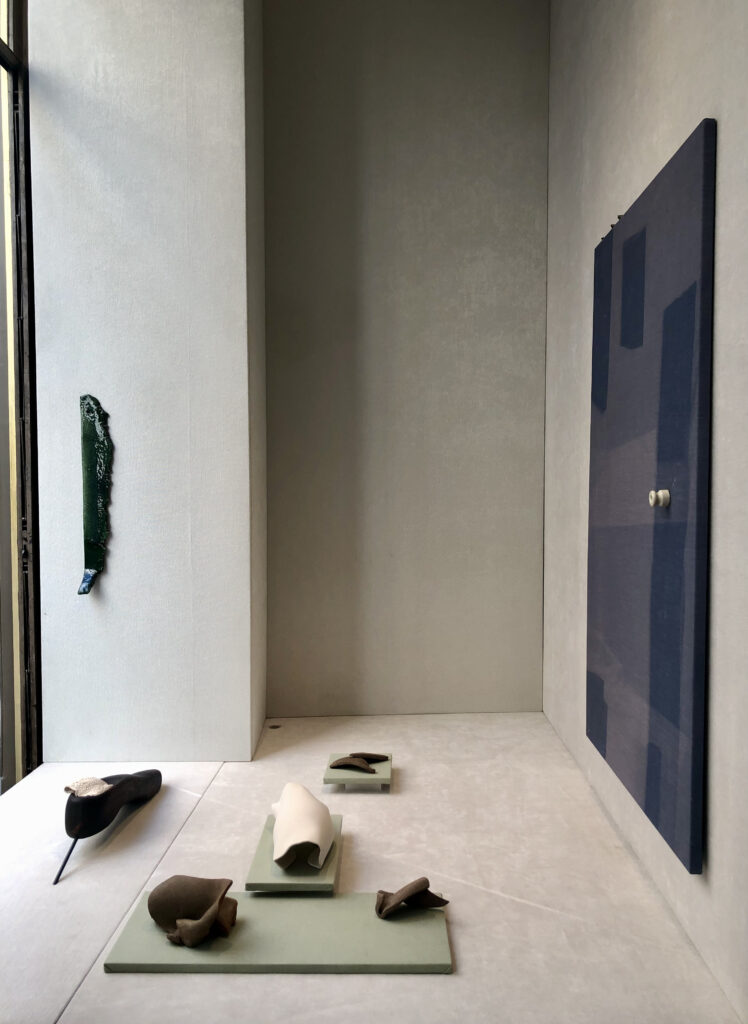
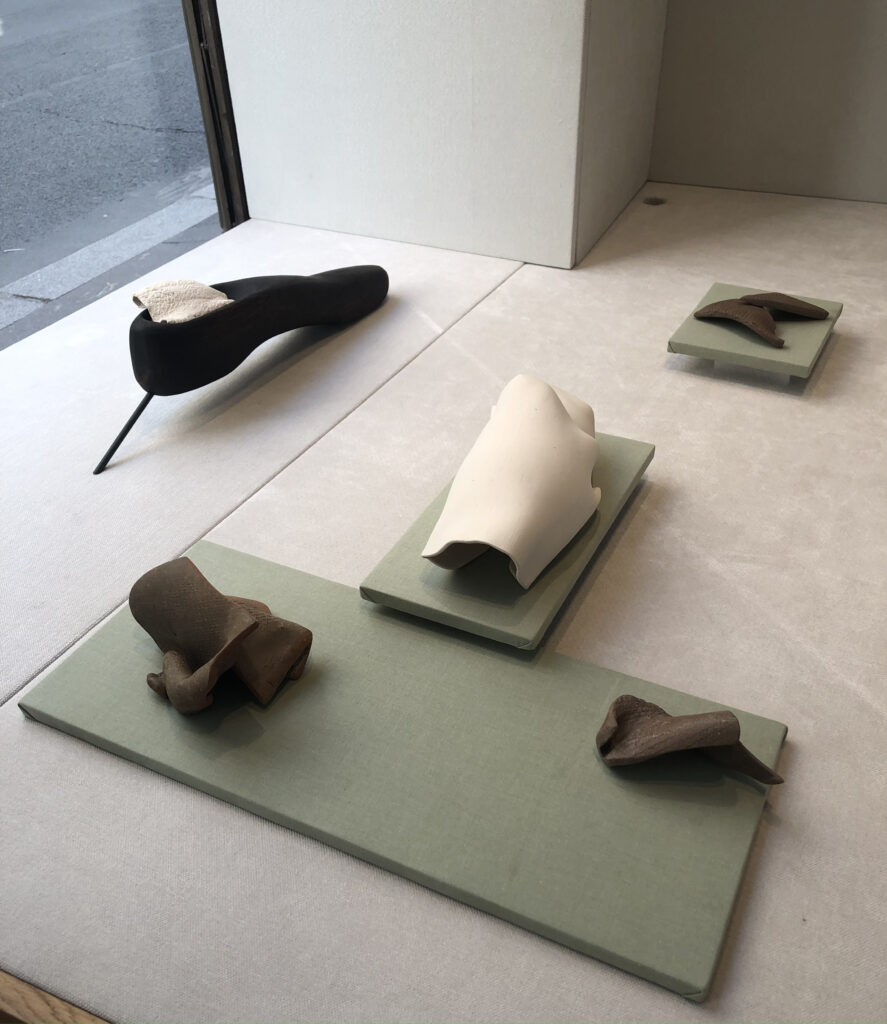
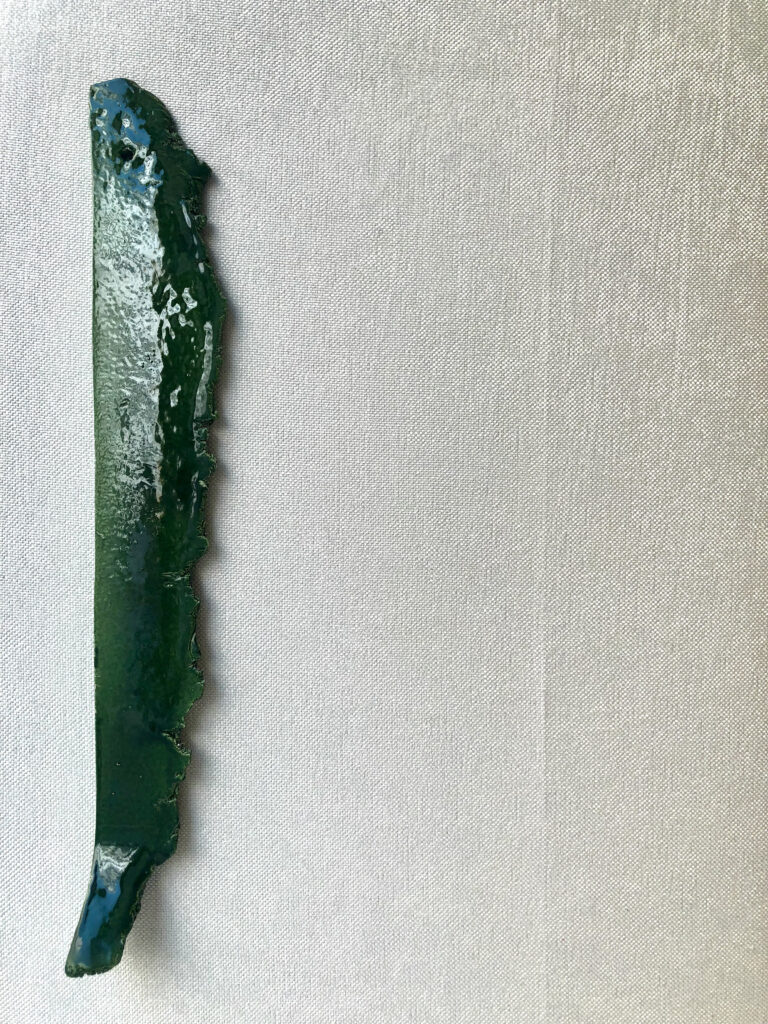
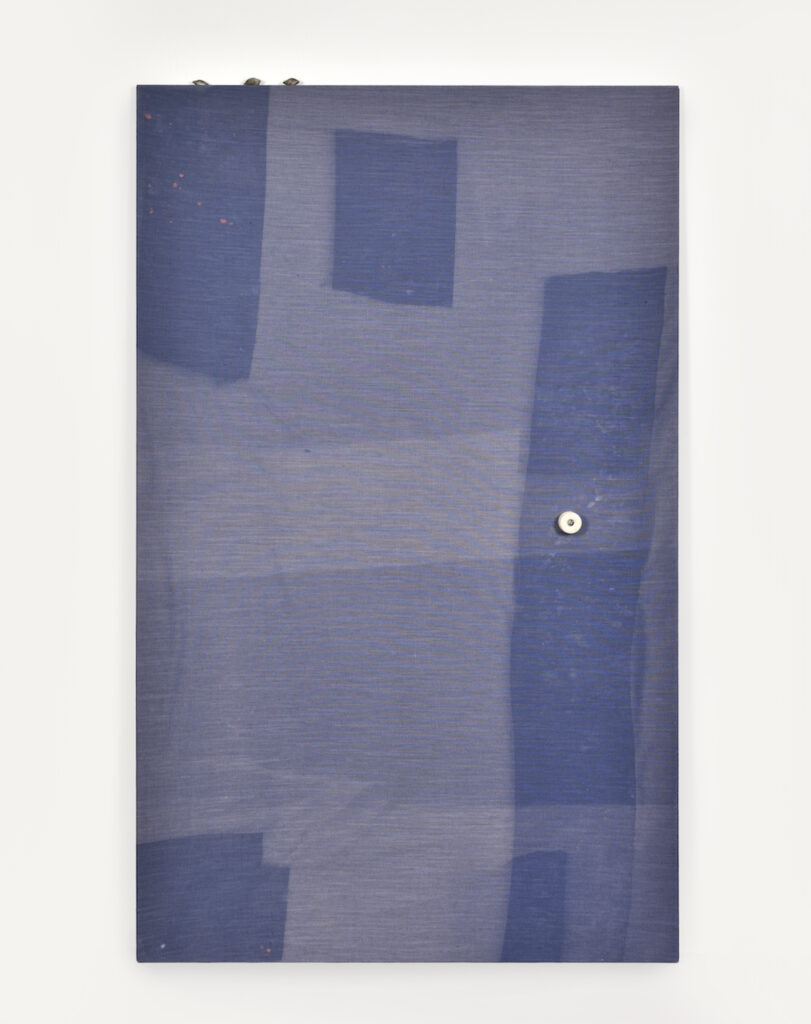
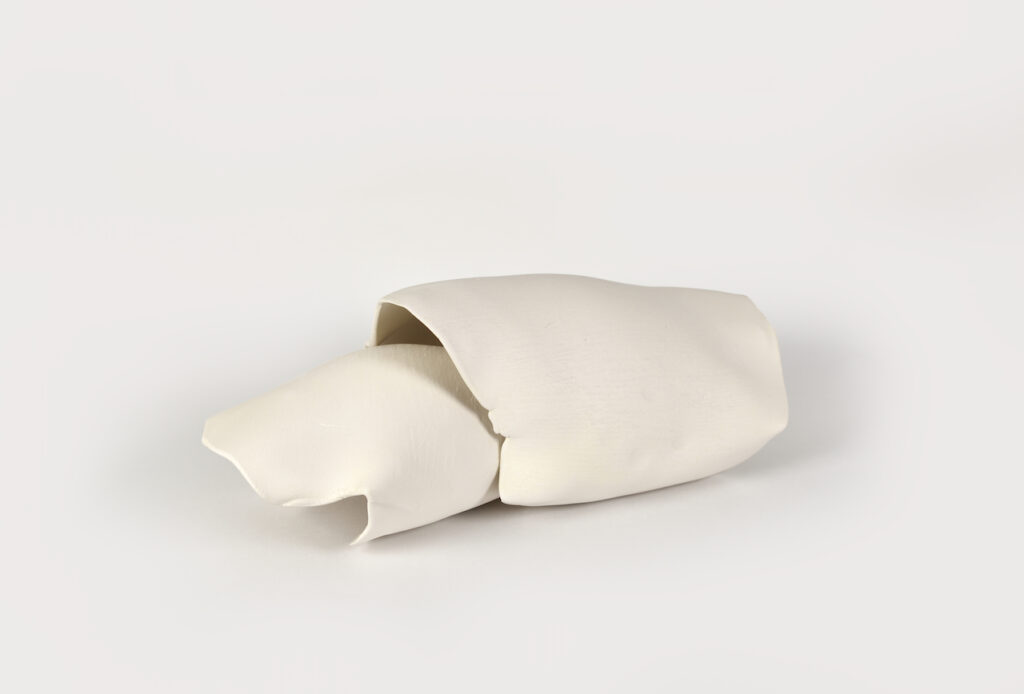
Abraham & Wolff is delighted to dedicate this new exhibition to the work of Katinka Bock. For the occasion, the artist has entrusted us with a selection of pieces straight from her studio, including monotypes and small sculptures. They are shown in a scenography that she has specially designed for our space.
This new ensemble captures the essence of the key gestures and themes that characterise the artist’s practice. Three sculptures in brown clay marked by an imprint reminiscent of scales bear witness not only to Katinka Bock’s interest in folded and creased forms, but also to the particular attention she pays to traces, a recurring motif that runs through her sculptural work as well as her photographs and monotypes. I’m your man, a green glazed ceramic piece designed to emphasise the boundary of the wall on which it is hung, is part of the artist’s research into the notions of border and threshold, understood as places of communication between the inside and outside of the spaces in which her works are exhibited. Another important source of reflection, the exploration of separation and the link between bodies, seems to inspire a piece composed of two interlocking white ceramics entitled Pavillon (Reunification). Particularly sensitive to issues of space and time, Katinka Bock sometimes exposes some of her creations to natural processes of alteration, allowing time and the external environment to affect the work, as with this blue canvas fixed to a stretcher after having been insolated in certain places. On the upper edge of the stretcher are three bronze replicas of apricot pits, reminiscent of other casts of real objects made by the artist: fish, cacti and cherry pits.
